6 Report on the structure of the State's oil and gas interests Submission to the Norwegian Ministry of Petroleum and Energy - Rapport fra UBS Warburg av 8. desember 2000
Disclaimer
This report has been prepared by UBS AG, acting through its financial services group UBS Warburg Ltd. (UBS Warburg), specifically for the Norwegian Ministry of Petroleum and Energy (MPE). UBS Warburg acknowledges that this report will be provided to the MPE in connection with our advice to the MPE in relation to the restructuring of the Norwegian State's oil and gas assets, and shall not be used for any other purpose.
This report has no regard to the specific investment objectives, financial situation or particular needs of any specific recipient. The report is published solely for information purposes and is not to be construed as a solicitation or an offer to buy or sell any securities or related financial instruments. The report is based on information obtained from public sources and sources believed to be reliable but is not guaranteed as being accurate, nor is it a complete statement or summary of the securities, markets or developments referred to in the report. UBS Warburg has not independently verified the information in this report. No representation or warranty, express or implied, is or will be made in relation to, and no responsibility or liability is or will be accepted by UBS Warburg as to the accuracy or completeness of the information. Any opinions expressed in this report are subject to change without notice and UBS Warburg is not under any obligation to update or keep current the information contained herein. UBS Warburg may have or have had interests or long or short positions in, and may at any time make purchases and or sales as principal or agent, or may act or have acted as market-maker in the relevant securities or related financial instruments referred to in this report. Furthermore, UBS Warburg may have or have had a relationship with or may provide or have provided corporate finance or other services to or serve or have served as directors of the relevant companies.
UBS Warburg is acting for the MPE and no-one else and will not be responsible to anyone else other than MPE for providing the protection afforded to customers of UBS Warburg nor for providing any advice in relation to the restructuring of the Norwegian State's oil and gas assets.
Sources of estimates and forecasts
| Data | Source |
| Norwegian Continental Shelf (NCS) reserves, production and costs | Norwegian Petroleum Directorate (NPD) as included in the update to National Budget 2000 (NB2000) |
| Statoil's non-NCS reserves, production and upstream costs; downstream operating profit and cash flow | UBS Warburg estimates based on public sources |
| Economic assumptions | Provided by the Ministry of Petroleum and Energy (MPE) |
| NCS, Statoil and State Direct Financial Interest (SDFI) asset and market values | UBS Warburg estimates incorporating updated NB2000 data and MPE economics. Asset values as at 1 January 2001 |
| All other company forecasts | UBS Warburg research estimates |
| Other historical and forecast data | Sources as noted |
References to reserves are to remaining proven and probable reserves unless otherwise stated.
6.1 Sammendrag
Denne rapporten er et sammendrag av råd gitt av UBS Warburg til Olje- og Energidepartement (OED). Hensikten med rapporten er å beskrive, fra et finansielt perspektiv, mulige måter å restrukturere statens eierskap i olje- og gassektoren for å oppnå målsettingen om forbedret effektivitet på den norske kontinentalsokkelen (NKS) til beste for det norske samfunn. Statens eierskap i olje- og gassektoren inkluderer Statens Direkte Økonomiske Engasjement (SDØE), skatte- og avgiftsinntekter fra selskapene på NKS og 100% eierskap av Den Norske Stats Oljeselskap AS (Statoil). Verdien av SDØE representerer omlag 43% av de samlede verdier, skatter og avgifter omlag 47% og Statoil bare 10%.
6.1.1 Bakgrunn
Enhver avgjørelse om restrukturering av NKS må ses i sammenheng med dennes posisjon i forhold til andre olje- og gassområder og utviklingen i olje- og gass- og energimarkedene generelt.
På tross av at Norge er verdens tredje største netto eksportør av olje og den tredje største leverandør av gass til Europa, så er NKS et relativt lite olje- og gassområde. Gitt antatt størrelse på fremtidige funn, så vil enhetskostnadene for leting, feltutvikling og produksjon av olje- og gassreserver være høyere enn i mange andre offshore olje- og gassområder, og vesentlig høyere enn i landbaserte olje- og gassområder, spesielt i midtøsten.
Statoil er operatør på felt som inneholder omlag 60% av olje- og gassreservene på NKS og 60% av antatt produksjon i år 2000. Hvis man inkluderer Norsk Hydro, øker disse prosentandelene til henholdsvis 80% og 75%. Det er bare 11 operatører på NKS sammenlignet med 42 operatører på britisk kontinentalsokkel. Disse 11 operatørene har i gjennomsnitt en økonomisk interesse per felt på 29%, sammenlignet med 55% på britisk kontinentalsokkel. Dette faktum, samt det gjeldende skatteregime, kan ha hatt en negativ effekt på iverksettelse av kostnadsreduserende tiltak på NKS.
En volatil oljepris fordrer fortsatt fokus på kostnader i alle faser av leting, utvikling og produksjon. Tilsammen har det funnet sted syv fusjoner mellom store integrerte oljeselskaper siden midten av 1998. Disse fusjonene har delvis funnet sted som en reaksjon på lave oljepriser. Denne utviklingen har skapt fem oljeselskaper med en markedsverdi på omlag 760 milliarder USD. Fortsatt konsolidering er overveiende sannsynlig tatt i betraktning de betydelige skalafordeler som kan oppnås i olje- og gassektoren.
Omlag 95% av gassproduksjonen på NKS eksporteres, og gass fra NKS forsynte omlag 10% av det europeiske gassmarkedet i 1999. Gass kommer til å dominere produksjonsprofilen på NKS fra 2016. Utviklingen i det europeiske gassmarkedet er derfor viktig for Statoil og statens gassinteresser på NKS. Den Europeiske Unions (EU) gassdirektiv kommer trolig til å medføre øket konkurranse for tilbydere av gass til forbrukere innenfor EU. Dette kommer til å medføre press på europeiske gasspriser.
Staten har som målsetting å sikre at de totale olje- og gassreserver på NKS utnyttes best mulig og at reserver som kan ha en positiv verdi blir utvunnet.
Staten ivaretar sin målsetting om effektiv ressursforvaltning gjennom lisensrundene, godkjenning av planer for feltutbygging og gjennom Gassforhandlingsutvalget (GFU), som er ansvarlig for å fremforhandle alle salgskontrakter for gass med potensielle kjøpere.
Statoil forvalter SDØE på vegne av staten under en definert styringsmodell. Statoils ledelse har forpliktelser overfor selskapet og staten som ikke alltid nødvendigvis er kompatible. Hvis Statoil blir privatisert kan derfor ikke Statoil fortsette å forvalte SDØE under den gjeldende styringsmodellen. Hvis Statoil likevel forstetter å ha dette ansvaret kan det medføre at verdier blir overført fra staten til Statoils minoritetsaksjonærer.
6.1.2 Privatisering
Statens verdiskapningen på NKS er på grunn av Statoils dominerende posisjon i stor grad avhengig av Statoils effektivitet. Enhver forandring av eierstrukturen i Statoil som kan hjelpe selskapets ledelse til å forbedre selskapets prestasjoner og øke effektiviten på NKS generelt må vurderes nøye. Vi er overbevist om at en delprivatisering av Statoil ved hjelp av et nedsalg og en børsnotering vil tjene det norske samfunn og statens interesser.
En delprivatisering vil gi:
en kontinuerlig og objektiv mekanisme for å måle Statoils effektivitet, samt gi selskapet eksponering overfor den disiplin som aksjemarkedet fordrer.
en klargjøring av Statoils rolle som kommersiell aktør, og mulighet å gi selskapet en mer effektiv beslutningsprosess.
en mulighet for staten til å diversifisere bort risikoen som er assosiert med Statoils aktiviteter utenfor NKS.
en økning i de verdier som er eiet av Statoil og staten; og
større fleksibilitet for Statoil til å ekspandere gjennom oppkjøp ved bruk av aksjer hvis behovet skulle melde seg.
Det kan være verdiskapende for Statoil å inngå en allianse hvor en strategisk partner også blir deleier i Statoil. Dette avhenger selvfølgelig av alliansens natur, men dette må ikke betraktes som et substitutt for en børsnotering. Vi tror heller ikke det er mulig å finne en effektiv mekanisme for kontinuerlig overvåkning av Statoils effektivitet uten en børsnotering.
Å restrukturere SDØE uten samtidig å delprivatisere Statoil vil resultere i at bare en liten del av de betydelige identifiserte fordeler vil kunne oppnås. Privatisering av Statoil uten en restrukturering av SDØE vil medføre en sub-optimal løsning for forvaltningen av SDØE og muligens lede til at verdien av Statoil og NKS ikke blir maksimert. Delprivatisering av Statoil og restrukturering av SDØE bør derfor finne sted samtidig.
Staten ønsker muligens ikke å redusere sitt eierskap i Statoil til mindre enn 67%. På dette grunnlag anbefaler vi at staten bør vurdere å selge 20% av Statoils askjekapital i et nedsalg som finner sted samtidig med en børsnotering av Statoil. Etter at Statoil har forbedret effektiviteten og oppnådd en bedre balansert virksomhet i løpet av de første 12-18 månedene kan ytterligere 13% selges. Et alternativ vil være å utstede nye aksjer i Statoil slik at statens eierskap blir utvannet ned til det ønskelige nivået. Den anbefalte størrelsen på nedsalget i forbindelse med børsnoteringen og et eventuelt senere nedsalg er i tråd med det som har vært vanlig for tilsvarende tidligere statseide selskaper i olje- og gass sektoren. Statoil bør noteres på Oslo Børs og i New York.
6.1.3 Restrukturering av SDØE
6.1.3.1 Bør staten beholde eller selge alle SDØE andelene?
Hvis Statoil privatiseres vil det være nødvendig å forandre forvaltningsstrukturen for SDØE. Vi anbefaler ikke at staten beholder alle SDØE andelene. En av grunnene for å privatisere Statoil er å effektivisere måten SDØE administreres på og dermed sette igang en restrukturering av NKS.
Vi anbefaler heller ikke å selge hele SDØE til Statoil eller i en åpen auksjon. En fusjon mellom SDØE og Statoil vil kunne utløse interessekonflikter mellom Statoil og andre operatører på NKS og er heller ikke påkrevet for å gi Statoil skalafordeler, ei heller for å muliggjøre en internasjonal strategi for Statoils oppstrøms- eller nedstrømsaktiviteter. Videre vil staten være avhengig av Statoil som operatør av SDØE lisensene, og for diversifisering vekk fra NKS. Likeledes vil statens netto kontantstrøm fra SDØE andelene på NKS subsitueres med skatteinnbetalinger, aksjeutbytte og eventuell verdistigning på statoil aksjen, noe som vil føre til en nedgang i statens kontantstrøm på kort sikt. Et av problemene med en åpen auksjon er at det muligens ikke er mulig å finne interessenter for alle SDØE andelene, slik at staten ender opp med å beholde uønskede andeler i et ustrukturert SDØE.
6.1.3.2 Hvilke SDØE andeler bør fortsatt eies av staten?
I valget mellom å selge eller beholde SDØE andeler, anbefaler vi at staten bare beholder de andeler som det er nødvendig å beholde for å tilfredsstille den primære målsettingen om å sikre statens kontantstrøm, nasjonal ressursforvaltning samt å sikre at gassinfrastrukturen på NKS blir utnyttet så effektivt som mulig og til beste for alle operatører. En omfattende forenkling av SDØE er den eneste praktisk håndterbare måten for å sikre at SDØE kan forvaltes uten å skape et nytt statlig oljeselskap med komplette tekniske og kommersielle funksjoner eller med regress til eksisterende operatører.
6.1.3.3 Hvilke SDØE andeler bør selges?
Staten bør vurdere å selge eierinteresser i lisenser hvor Statoil er operatør. Statoil bør være den primære mottager av SDØE andeler:
Statoil er den største operatør på NKS og det å allokere andeler i lisenser hvor Statoil er operatør til andre vil kunne destabilisere joint ventures.
Ved å styrke Statoil før en børsnotering kommer Statoil trolig til å oppnå en høyere verdivurdering i aksjemarkedet, avhengig av aksjemarkedets syn på ledelsens strategi for reinvestering av den kontantstrøm som genereres.
Staten vil sikres en markedsmessig verdivurdering av de SDØE andeler som overføres gjennom en børsnotering av selskapet.
Hvis Statoil gis en større eierandel i lisensene vil selskapet ha et insitament til å redusere kostnader og øke utvinningen.
Statoil burde være i stand til å ta ut betydelige fordeler ved å ha en større eierandel på sokkelen, for eksempel fleksibilitet til å reorganisere eierinteresser for å skape regioner hvor effektiviteten økes gjennom koordinering av aktiviteter og gjennom å være bedre posisjonert for å diversifisere vekk fra NKS.
Salget av SDØE andeler til Statoil er et hjelpemiddel for staten til å endre rolle på NKS fra å være eier til bli reguleringsmyndighet. På samme tid bekreftes Statoils kommersielle agenda, beslutningsprosesser effektiviseres og potensialet for interessekonflikter reduseres. Det skapes også forutsigbarhet for Statoil samtidig som den politiske debatt rundt kommersielle aktiviteter vil reduseres.
De SDØE andeler som staten ikke beholder eller selger til Statoil bør gjøres tilgjengelig for salg til andre parter, inkludert Norsk Hydro. Overføring av operatørskap til andre operatører, sammen med salg av SDØE andeler, vil tjene målsettingen om maksimering av statens verdier. Introduksjon av nye operatører kan forbedre effektiviteten og derigjennom ha en positiv innvirkning på utviklingen av NKS. Det vil trolig ikke være mulig å finne en tilsvarende mulighet for å påvirke utviklingen av NKS på denne skalaen, men denne prosessen forutsetter Statoils samarbeid.
6.1.3.4 Operatørselskap for infrastruktur for naturgass
Gassrørledningsnettet og prosessanlegg må drives og utnyttes effektivt for å tjene utviklingen av hele NKS. Vi anbefaler at Statoil beholder størstedelen av sine eierandeler i gassrørledningsnettet, men at operatøransvaret overføres til et uavhengig gassoperatørselskap. Å etablere et gassoperatørselskap ivaretar målsettingen om å fremme utviklingen og utnyttelsen av gassrørledningsnettet til beste for alle deltagere på NKS.
Det er hensiktsmessig å skille ansvaret for å administrere gassrørledningsnettet på NKS fra Statoil. En slik forandring medfører minimale endringer i det eksisterende kontraktuelle rammeverk mellom lisenseiere, eiere av gassrørledninger og operatører. Dette må ikke føre med seg negative effekter for den eksisterende virksomheten på NKS. Gassoperatørselskapet må derfor være uavhengig av lisenseiere, eiere av gassrørledninger og operatører på NKS.
6.1.3.5 Ny forvalterordning for SDØE
Staten trenger fleksibilitet til å ta uavhengige avgjørelser med hensyn til forvaltning og utvikling av sine SDØE eierandeler uten å være 100% avhengig av informasjon fra lisenspartnerene. Imidlertid er hensikten ikke å la de tilbakeholdte SDØE andelene utgjøre kjernen i et nytt uavhengig oljeselskap. Vi anbefaler derfor at staten etablerer et nytt selskap som gis ansvaret for utviklingen av SDØE, men som likevel kan sette bort oppgaven med den daglige overvåkingen av virksomheten til andre. Staten vil fremdeles ha behov for å la Statoil selge SDØEs olje og gass.
6.1.4 Resultater av restruktureringen
6.1.4.1 Effekt på statens kontanstrøm
Enhver reduksjon i statens kontanstrøm vil trolig bli delvis kompensert gjennom en økning i effektiviteten på NKS. En slik effektivitetsøkning kan være resultatet av en restrukturering av SDØE samt privatisering av Statoil. Dessuten vil en redusert kontantstrøm mer enn kompenseres ved at staten mottar kapital med en lavere assosiert risiko gjennom privatisering av Statoil (statoil aksjer) og salg av SDØE andeler (kontanter).
6.1.4.2 Kommersialisering av NKS
Den foreslåtte restrukturering har som målsetting å øke kontantstrømmen fra NKS og således også verdien av NKS før skatt. I figur 6.1 viser vi en analyse av verdiskapningspotensialet for NKS (før skatt).

Figur 6-1 Det totale verdiskapningspotensialet på NKS-verdier før skatt
Så mye som mellom en tredel og halvparten av verdiene som skapes gjennom forbedret utvinning, reduksjon i kostnader og reinvestering på NKS, kan avhenge av en forandring av eierstrukturen. Dette representerer verdier for mellom 120 og 180 milliarder kroner, hvorav mesteparten vil tilfalle staten gjennom SDØE og skatter.
6.2 Purpose and scope of the report
This report summarises a large body of advice provided to the MPE since our appointment in July 1999. Our advice and the foundation for this report is based upon our:
Understanding of the business and strategy of Statoil including as set out in the UBS Warburg Research Reports on Statoil dated June 1998 and June 1999.
Advisory assignments in the oil and gas industry over an extended period of time.
Extensive published research on the international oil and gas markets and on integrated and Eamp;P companies world-wide; and
Experience in the privatisation of numerous State companies, including companies in the oil and gas sector.
The State's interests in the oil and gas sector are primarily those interests connected with the NCS and comprise:
The SDFI.
Fiscal receipts from participants on the NCS; and
The State's 100% ownership of Statoil.
Other interests include the State's 44% holding in Norsk Hydro and tax receipts from companies providing services to participants on the NCS.
The objective of any restructuring must be to improve the overall efficiency of all operations on the NCS at all stages of exploration and exploitation for the benefit of society as a whole. In doing this, the State will benefit:
Directly, through the SDFI and its ownership of Statoil; and
Indirectly through the value of tax receipts and maintaining long-term employment and industry expertise.
An assessment of the fiscal regime is outside the scope of this report.
6.3 Background
6.3.1 The oil and gas industry
This introduction provides a summary only of the background to the oil and gas industry. Its purpose is to set out certain external factors that we believe have a bearing on any decision to restructure the State's oil and gas interests and the scope and scale of any such restructuring. It does not aim to provide a comprehensive review of all the factors relevant to an understanding of the oil and gas industry.
6.3.1.1 Supply and demand
Supply
Oil continues to be the most important source of energy providing some 40% of global energy demand in 1999. Coal and gas provided 23% and 25% respectively. The Middle East as a whole holds about two thirds of the world's proven oil reserves of some 1.0 trillion barrels (bbls). Proven reserves are only those that are considered to be economic to produce under current expectations of oil prices, costs and technology. Total recoverable reserves are considerably higher. At current rates of production, proven reserves in the Middle East have an expected life of some 100 years.
Saudi Arabia, the United States (US) and the Former Soviet Union account for some 33% of total liquids production. Middle East producers as a whole also account for 30% of world oil production and form the principal oil exporting countries. Norway is, however, the third largest net crude oil exporting country after Saudi Arabia and Russia.
Total Middle East production is constrained by quotas arranged under The Organisation of Petroleum Exporting Countries (OPEC). OPEC was founded in 1960 in response to falling oil prices. OPEC member countries supply more than three quarters of the world's oil and possess over 60% of total proven oil and gas reserves.

Figur 6-2 World supply and demand balance
Kilde: (Source: UBS Warburg research)
Demand
The US is the largest single consumer of oil accounting for some 25% of total 1999 demand, over three times the consumption volumes of Japan and four times the volumes of China, the second and third largest users respectively. US gasoline accounts for 42% of US oil demand and 39% of world gasoline demand. The US is as a consequence the largest importer of crude oil. Long-term, most analysts agree that oil demand is correlated to economic growth, with some reduction arising from the penetration of alternative fuel sources, particularly gas.
Demand for all energy sources continue to increase. Demand for gas has increased as a proportion of total demand largely at the expense of coal with environmental pressures, improvements in technology and the availability of gas reserves close to market. In the US and UK, which have a multiplicity of domestic suppliers, a spot market for gas has developed in which gas prices are no longer linked directly to oil prices. Elsewhere, producers and consumers generally enter into long term contracts, in part to support the construction of necessary infrastructure, under which gas prices are linked to oil prices.
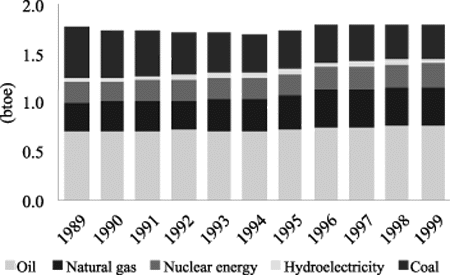
Figur 6-3 Total European consumption
Kilde: (Source: BP Amoco Statistical Review of World Energy)
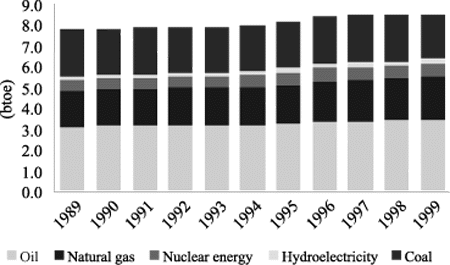
Figur 6-4 Total world consumption
Kilde: (Source: BP Amoco Statistical Review of World Energy)
6.3.1.2 Prices and costs
Prices
Oil prices are set, as with other commodities, according to the balance of supply and demand. Although in the longer term advances in technology have led to a gradual decline in real oil prices, short-term changes in supply and demand can cause rapid changes in prices. Oil prices rose sharply in 1973 as a result of an oil embargo following the Arab-Israeli war and again in 1979 upon the Iranian Revolution. Oil prices fell sharply in 1986 due to Saudi Arabia's decision to end its role as swing producer and to introduce net ack pricing and again in 1998 following the Asian economic crises at a time of high stock levels caused by earlier warm weather and OPEC over production. The price of Brent blend crude oil on the spot market fell to less than US$10 bbl in December 1998. Subsequent OPEC agreements on production cuts, the first of which was in March 1999, led to a recovery in the price of Brent to over US$31 bbl in March 2000. Following this build up in prices, OPEC agreed in March 2000 to increase production so that Brent would trade at between US$22 and US$28 bbl. In mid November, Brent was trading at approximately US$32.5 bbl (spot) and at US$23.2 bbl for delivery in December 2002.
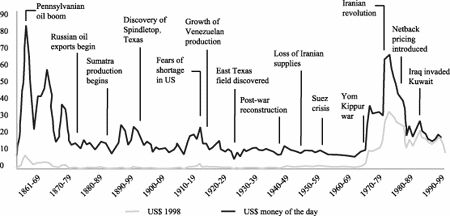
Figur 6-5 Real oil price development
Kilde: (Source: BP Amoco Statistical Review of World Energy)
Costs
New production from fields in the Middle East can be brought on-stream at a cost as low as US$1 per barrel of oil equivalent (boe). By contrast, the cost of finding and developing (Famp;D) new reserves in the prolific deepwater basins now being developed is commonly in the range of US$6 - US$8 boe. Given oil price volatility and a structural cost disadvantage, the future growth of the international oil community in basins outside the Middle East and other low cost environments needs continual attention to costs at all stages of exploration, development and production.
6.3.1.3 Participants
There are three broad categories of participants in the sector:
National oil companies (NOCs).
Integrated oil companies, which are often subdivided into the majors and other integrateds; and
Independent Eamp;P companies.
The integrated and independent Eamp;P companies are mostly listed on a national stock exchange and as a consequence have a wide share ownership.
The discovery of large hydrocarbon reserves and the realisation of the fundamental economic importance of oil, both to exporters and importers, led to the emergence of many NOCs. The principal NOCs are those of the OPEC member states, including Saudi Aramco, National Iranian Oil Company, PdVSA (Venezuela) and Pertamina (Indonesia). The OPEC countries, and hence their NOCs, accounted for three quarters of proven oil reserves at the end of 1999 and 43% of total proven gas reserves. The list of NOCs includes many from non-OPEC companies such as Pemex (Mexico), Petrobras (Brazil), CNOOC and CNPC (China), ONGC (India) and Petronas (Malaysia).
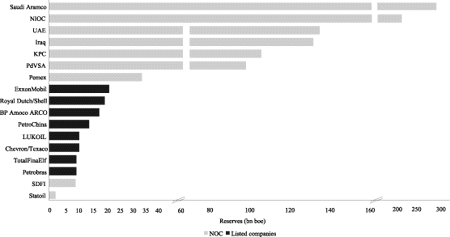
Figur 6-6 Proven oil and gas reserves
Kilde: (Source: Industry sources, annual reports)
The aggregate proven reserves of the integrated companies is less than 10% of NOC proven reserves. Most integrated oil companies have developed considerable downstream portfolios in refining & marketing (Ramp;M), petrochemicals, gas transmission and distribution, liquefied natural gas (LNG) and, increasingly, power generation.
Most independent Eamp;P companies, which are considerably smaller than the integrated companies, are based in the US and have expanded out of domestic onshore acreage. Other Eamp;P companies are based in the UK, Canada, Australia and the Far East.
6.3.1.4 Consolidation
Since August 1998, there has been dramatic consolidation among listed oil companies with seven mergers of integrated companies creating five entities that currently have a combined enterprise value of US$760 billion. The consolidation was in response to low and volatile oil prices, limited internal cost-cutting potential and limited growth opportunities, which had dampened investor interest. The mergers are expected to yield approximately US$9 billion of annual pre-tax savings. Consolidation may continue as an estimated US$100 billion of cash becomes available after disposals and re-capitalisation following the mergers. The consequence of these mergers on the number and size of selected listed participants in the sector is set out in figures 6.7 and 6.8. Within this listed sector, the three largest groups - ExxonMobil, Royal Dutch Shell and BP Amoco Arco - now account for approximately 60 % of proven reserves and refining capacity.

Figur 6-7 Major integrated companies - August 1998
Kilde: (Source: Annual reports and journals)
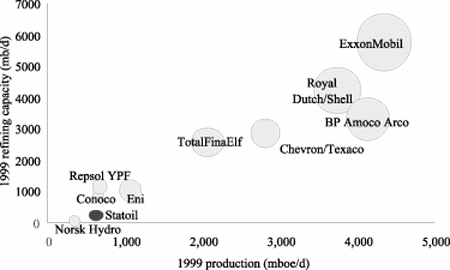
Figur 6-8 Major integrated companies - November 2000
Kilde: (Source: Annual reports and journals)
6.3.1.5 Further developments
UBS Warburg forecasts annual production growth for the integrated sector as a whole to average about 4% over the next few years. The bulk of this growth will come from deep water areas, such as the Gulf of Mexico and West Africa, which have been made possible by technological developments, and LNG projects in the Middle East, Nigeria and Trinidad. Many of the large integrated oil companies are planning to invest in the low cost, highly prospective Middle Eastern countries that have recently started to open their markets. The Caspian region has also become more attractive to the integrateds and independents.
Technological progress is critical to the further development of the upstream sector as hydrocarbon discoveries are in increasingly remote, often deepwater areas and tend to have a greater gas component. Companies in the sector are aware, particularly in light of recent low oil prices, of the importance of better reserve recovery, faster time to first oil produced and lower development costs.
6.3.2 European gas market
Developments in the European gas market are important to Statoil and the State's NCS gas interests. In 1999, Norway exported 45.5 billion cubic metres (bcm) of natural gas to Europe, accounting for 10% of total European demand. This level is forecast by the NPD to grow rapidly. Gas will start to dominate the NCS production profile from 2016 onwards. Most major discoveries, which are being developed or have yet to be developed, are gas: for example Åsgard, Ormen Lange and Snøhvit. Developments in the European market will, therefore, have an important bearing on a large part of the future value of the NCS.
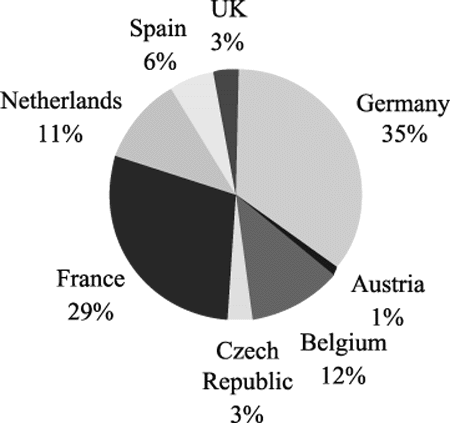
Figur 6-9 1999 Norwegian gas exports by destination
Kilde: (Source: MPE Factsheet 2000)
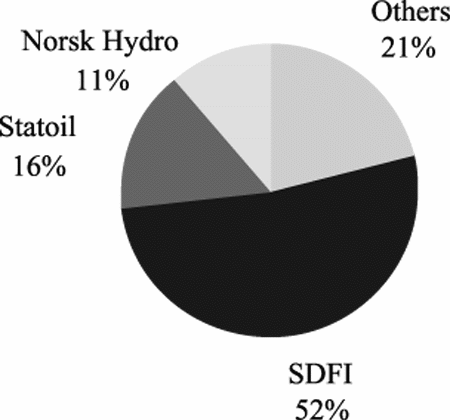
Figur 6-10 NCS proven and probable gas reserves
Kilde: (Source: Statoil, Norsk Hydro, NPD, others)
6.3.2.1 Demand and supply
The UK is the largest consumer of gas in Europe but is currently self-sufficient. Germany is the second largest consumer and is Norway's most important customer. Germany also imports gas from Russia and the Netherlands. Other important users of gas are Italy, France and the Netherlands. Gas consumption in Europe is forecast to grow at an average annual rate of 2.5% between 1998 and 2010. The bulk of this incremental demand will derive from the public power sector as environmental and financial considerations force the replacement of nuclear capacity with combined cycle gas technology. Gas will also be increasingly used in captive power plants to provide both heat and electricity (cogeneration) locally.
The largest supplier of gas to Europe is Russia. Russia has about 33% of the world's proven gas reserves while Norway has less than 1%. Although gas utilities will always wish to use different sources to diversify supply portfolios and Russian gas will only be competitive at certain distances, the potential for Russian gas to crowd out other sources should not be under estimated. Figure 6.11 illustrates that a significant and sustained increase in Russian supply is expected in the medium term. This is subject to further investment and a degree of economic and political certainty in the country.
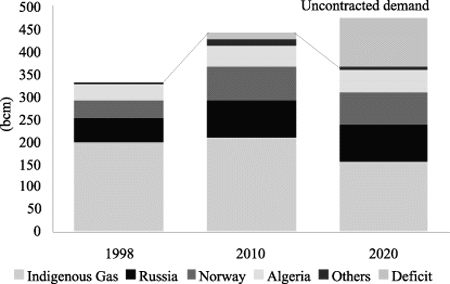
Figur 6-11 EU gas demand and contracted imports
Kilde: (Source: Eurostat, Eurogas)
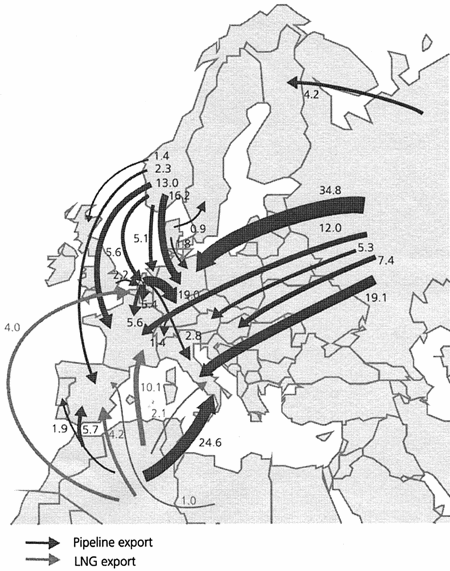
Figur 6-12 EU gas trade
Kilde: (Source: BP Amoco Statistical Review of World Energy)
6.3.2.2 EU Gas Directive
The EU Gas Directive was adopted in 1998. Member States were required to enact legislation to meet the requirements of the Directive by 10 August 2000. This should force a greater degree of competition in the supply of gas to eligible end users. The Directive requires that Member States:
Specify that at least the following eligible customers have the legal capacity to contract with third parties for natural gas:
gas fired power generators, perhaps with the exception of cogeneration plants.
other customers using more than 25 mcm annually on a site basis. This threshold will be reduced to 15 mcm per year five years after enforcement and to 5 mcm ten years after enforcement.
Ensure that at least customers using 20% of the total annual gas consumption of the national gas market are eligible. This percentage will increase to 28% five years after enforcement and to 33% ten years after enforcement.
The principal driver of increased competition will be third party access (TPA), whereby capacity in existing pipeline infrastructure will be made available to potential shippers either on a regulated or negotiated basis. Gas companies are required to «unbundle» their businesses and accounts. This will force them to show separate accounts for natural gas transmission, distribution and storage activities. The transparency will enable regulators to detect any abuse of a dominant position such as abnormally low or high tariffs or discriminatory practices.
Derogation from the requirements to grant access to systems may be allowed under certain circumstances:
If gas utilities are burdened with onerous, historic take or pay contracts, subject to certain other conditions.
If a Member State is dependent on a single external supplier for more than 75% of its imports; and
If a Member State qualifies as an emergent market that requires certainty to facilitate gas related investment. Portugal and Greece fall into this category.
The UK gas market may provide an illustration of the likely development of competition. This market was deregulated in the late 1980s early 1990s, mainly in response to complaints made to the Monopolies and Mergers Commission and the resulting directives imposed on British Gas. The directives enforced the loss of market share in certain customer segments, the release of upstream gas and access to the onshore transmission and distribution network, which is now known as TransCo and operates under regulated TPA. The UK has seen, at the peak, in excess of 40 new gas marketers enter the gas supply business. These marketers have tended to be subsidiaries of upstream producers or regional electricity companies. The market has now consolidated, with about a dozen marketers controlling the bulk of the market.

Figur 6-13 BG loss of market share
Kilde: (Source: OFGEM)
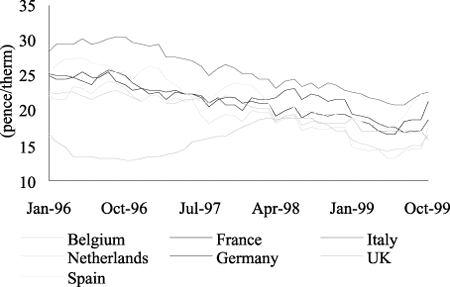
Figur 6-14 Gas prices in Europe
Kilde: (Source: UBS Warburg research)
The same degree of market entry is unlikely to be seen in continental Europe. The UK market is characterised by a multiplicity of suppliers and a single company is responsible for all transmission and distribution. In contrast, the German market, which accounted for 35% of Norwegian exports in 1999, is highly dependent on imports from a few suppliers and is characterised by three tiers of suppliers. Large supra regional suppliers, such as Ruhrgas and Wingas, import natural gas and sell it to the second and third tier companies as well as directly to some end customers.
Notwithstanding concentration in upstream supply and differences in scope of existing market participants, European liberalisation should change the structure of the market including the creation of a spot market and entry by a range of companies into different parts of the gas chain. This is expected to provide end-users with greater choice, alter the balance of power in favour of end-users and maintain downward pressure on gas prices. Corporate relationships between producers and market participants may soften the immediate effect of liberalisation.
6.3.3 The NCS in context
6.3.3.1 Reserves
The NCS is the largest European hydrocarbon province but is relatively small when compared with other major provinces. Total remaining reserves estimated by the NPD are of 18.2 billion boe, comprising 9.4 billion boe of oil, 7.6 billion boe of gas and 1.2 billion boe of natural gas liquids (NGLs).
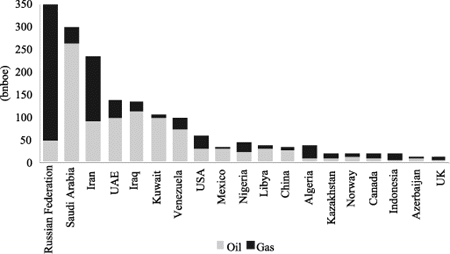
Figur 6-15 NCS proven reserves versus other countries (1999)
Kilde: (Source: BP Amoco Statistical Review of World Energy)
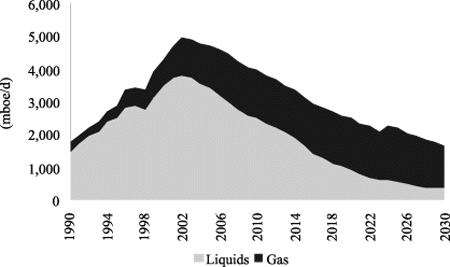
Figur 6-16 NCS production profile
Kilde: (Source: NPD)
6.3.3.2 Production
Norway is, and has been, predominantly an oil province, partly as a result of the State's policy of ensuring oil reserves are produced in preference to non-associated gas reserves (the oil first policy). Average NCS production in 1999 was 3.9 million boe d, comprising 3.1 million boe d of liquids (80%) and 0.8 million boe d of gas (20%). Gas is forecast to rise to 26% of total production by 2005, 32% by 2010 and 56% by 2025. Norway is the third largest net exporter of crude oil in the world and the third largest supplier of gas to Europe. If present rates of production are maintained, the estimated life of NCS proven and probable reserves is 13 years and the estimated life of remaining discovered reserves 1 is 26 years. This compares to a proven and probable reserve life of the UKCS of 8 years and a remaining discovered reserve life of 12 years. The life of NCS gas reserves is substantially longer than for oil: gas - 27 years proven and probable and 73 years remaining discovered; oil - 9 years proven and probable and 14 years remaining discovered.
6.3.3.3 Maturity
The NCS as a whole is becoming increasingly mature. Set out in table 6.1 are NPD estimates of the reserves position of each of the three regions of the NCS: the North Sea, Norwegian Sea and Barent Sea. The first four licensing rounds covered blocks in the North Sea. The first significant discovery in that region was the Balder field in 1967, followed by Ekofisk in 1969. The fifth licensing round, in 1979, was the first to include awards outside the North Sea in the Halten Bank (Norwegian Sea) and the Tromsø Patch (Barents Sea). The first discovery in the Halten Bank region was the Midgard field, now part of the Åsgard development. The principal focus of the 6 th -10 th licensing rounds was the Norwegian Sea. The 11 th licensing round in 1987 was the first to award mainly licences in the Barents Sea.
As a result, most activity has been concentrated in the North Sea and an estimated 54% of original proven and probable reserves have been recovered in this region compared to 16% in the Norwegian Sea. A total of 35 production licences have been awarded in the Barents Sea since 1980 and a number of discoveries have been made.
Tabell 6.1 NCS originally in place and recovered reserves
| Reserves originally in place (bn boe) | Current reserves (bn boe) | Recovered to date (%) | |
| North Sea | 30.5 | 14.1 | 54 |
| Norwegian Sea | 5.0 | 4.1 | 16 |
| Barent Sea | 0.0 | 0.0 | - |
| Total | 35.5 | 18.2 | 48 |
Kilde: (Source: NPD.)
6.3.3.4 Costs
There are two broad areas of relevant costs: (1) finding, development, production and abandonment costs, or full cycle costs and (2) tax costs. For illustrative purposes only, set out in figures 3.16 and 3.17 is an analysis of selected field development costs against reserves for representative fields in different hydrocarbon provinces and of state tax take in a number of oil producing countries. As an offshore basin in relatively deep water and with a strong health and safety policy, full cycle costs tend to be higher on the NCS than for other similar basins. State tax take is also higher than for many other countries with a similar cost position. A combination of costs, fiscal regime and the size of remaining potential discoveries, determines the enthusiasm of oil companies to participate on the NCS. High tax rates increase the receipts for the State but at the time also reduce operators» incentives to reduce costs.
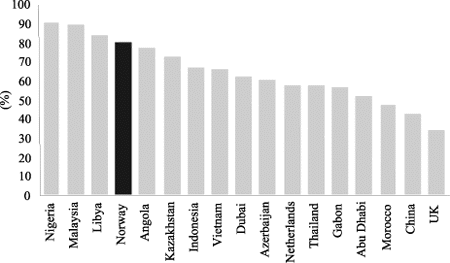
Figur 6-17 State take
Kilde: (Source: Execon)
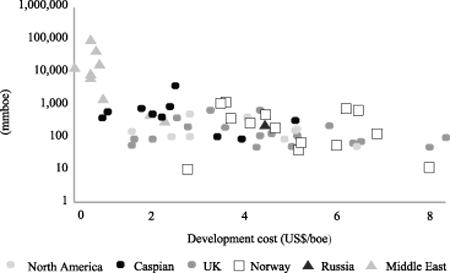
Figur 6-18 Development costs
Kilde: (Source: Centre for Global Energy Studies)
6.3.3.5 Export
Approximately 93% of NCS oil production and 95% of gas production is exported. The offshore gas pipeline system connects Norway to continental Europe. It comprises six export pipelines, three of which land in Germany, one in the UK and one each in Belgium and France. Gas exports totalled 45.5 bcm in 1999. Statoil operates all of the pipelines that transport gas to landfall points in continental Europe with the exception of the Frigg Transport system and Norpipe (Gas), both of which supply the UK.
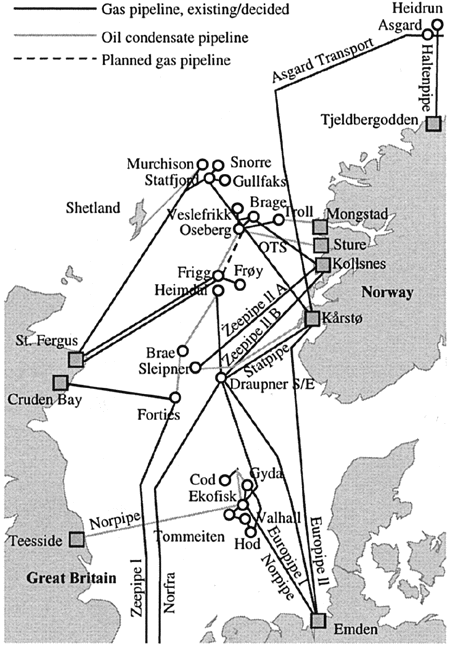
Figur 6-19 Norwegian offshore pipeline system
6.3.3.6 Participants on the NCS
International companies have played an important part in the development of the NCS commencing with Phillips Petroleum's application to explore on the NCS in 1962. Norway's first licensing round was held in 1965. Early discoveries, including Ekofisk, Valhall and Frigg, were developed by international companies. Norwegian companies did not participate until the third round in 1974. Now, however, Statoil and Norsk Hydro dominate the NCS. Following the take over of Saga Petroleum ASA (Saga), the gap between these companies and international participants has widened. Statoil's management of the SDFI serves to emphasise this position.
There are currently 22 international companies with interests in operating licences on the NCS and 11 operators. This compares to 77 companies and 42 operators on the UKCS. Statoil operates fields containing an estimated 60% of NCS reserves and 60% of forecast year 2000 production. Together with Norsk Hydro, these percentages increase to 80% and 75% respectively. With increasing maturity of the NCS the average size of discoveries declines. With smaller discoveries and the establishment of infrastructure, the level of required investment declines, which would normally encourage a greater level of involvement by the smaller independent companies.

Figur 6-20 Top ten participants on the NCS
Kilde: (Source: UBS Warburg estimates based on NPD)

Figur 6-21 Top ten participants on the UKCS
Kilde: (Source: UBS Warburg estimates based on Wood Mackenzie)
Participants on the NCS have low percentage interests in fields. The average percentage interest of operators on the NCS is only 29% compared with 55% on the UKCS. Excluding licences that were awarded prior to 1970, the average interest of the operators falls closer to 20%.
6.3.4 State participation on the NCS
6.3.4.1 Ownership and taxation
The State's ownership interests on the NCS are primarily held through:
Licences held directly by the State as part of the SDFI. The SDFI was established in 1985 when a portion of interests in most licences owned by Statoil was transferred to the State. As a consequence, a large portion of cash flows are paid directly to the State. Statoil manages the SDFI assets on the State's behalf under the Guidance Model. The State has retained an interest in all licensing rounds since 1985. Participation is determined on a case y case basis. The SDFI invests in licences as a full partner under the terms of the licence.
Its 100% ownership of Statoil. Statoil was established as a State owned oil company by a unanimous resolution of the Storting in 1972. Statoil's principal activity is the exploration and production of hydrocarbons on the NCS. Its other businesses include refining and marketing (Ramp;M) in the Nordic region, international Eamp;P and European gas. A detailed description of Statoil is provided in the UBS Warburg Research Report dated June 1999.
The petroleum taxation system. The bulk of the State's income derives from corporate tax (28%) and special petroleum tax (50%). The State also receives royalties on oil production from certain fields, licence fees and carbon dioxide tax.
The split of value between these three components is set out in figure 3.22 together with an assessment of the cash flows from each source until 2015, in figure 3.21. The post-tax value of Statoil represents only about 10% of the value of the State's interests.
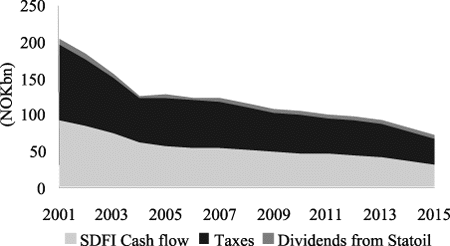
Figur 6-22 Projected cash flows to the State
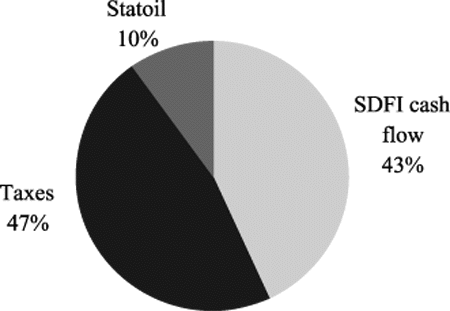
Figur 6-23 Value of State's interests on the NCS
The State also holds a 44% interest in Norsk Hydro. The State's shareholding was reduced from 51% to 44% in 1999 following Norsk Hydro's public offer for Saga. Norsk Hydro is primarily involved in Eamp;P on the NCS, light metals and agriculture. Norsk Hydro has a primary listing on the Oslo Stock Exchange. On 21 November, Norsk Hydro had a market capitalisation of NOK98.1 billion, valuing the State's interest at NOK43.2 billion.
6.3.4.2 Maintaining NCS development
The State seeks to ensure that the NCS is fully exploited and that oil and gas reserves that could have a value are developed. This national resource management objective is a key factor in formulating any restructuring proposal. The State pursues its national resource management objective through a number of methods including:
The award of production licences
The approval of field development plans (PDOs); and
The gas resource management system which includes the responsibility to designate contract and delivery fields for all gas sales agreements and to approve commercial deals.
Commercial negotiations in respect to gas sales are co-ordinated under the GFU which is chaired by Statoil. The GFU is responsible for the negotiation of all gas sales contracts with potential buyers.
6.3.4.3 Guidance Model
Statoil directors have a fiduciary duty to maximise the value of the company. At the same time, Statoil manages the SDFI on behalf of the State under a Guidance Model. This was established in 1992 to formalise the looser guidelines under which Statoil had been working since the separation of the SDFI from Statoil in 1985. Statoil is not compensated by the State for managing the SDFI assets nor does Statoil pay the State for any benefits it gains from having the right to sell SDFI equity production.
The Guidance Model states, as an over riding objective, the requirement for Statoil to maximise the State's total return on invested capital and specifies that:
Investment decisions are to be made on the basis of total value creation for the State (Statoil and SDFI).
Investments are to be acceptable based on both the State's and Statoil's discount rate; and
Statoil will consider the relative distribution of value creation between Statoil and the SDFI.
The existing arrangements do not:
Require Statoil to manage the SDFI portfolio as a separate entity on a commercial basis.
Regulate the quantity and focus of management time on the SDFI assets.
Require Statoil to communicate and instil the objectives of the Guidance Model throughout its organisation; or
Reward individuals or departments specifically for achievements with respect to the SDFI assets.
As a result, circumstances could give rise to conflicts of interest between Statoil and the State. Examples of possible conflicts of interest include:
In the short term, there may be diversion of capital away from NCS projects, which have a positive value to the State. Over the long term, if Statoil does not have the interest or capital needed to take NCS developments forward, it is likely to sell its interest to partners or new operators that will continue with developments.
Using SDFI interests to diversify high cost, high risk projects which Statoil and other partners would not seek to complete alone.
Allocation of SDFI gas to pipelines in which Statoil has greater ownership, such as Statpipe; and
Allocation of Statoil capital and management time to Eamp;P where the SDFI does not have an interest or non Eamp;P projects, if this restricts NCS development.
Whilst Statoil remains 100% State owned, conflicts may in large part simply result in a substitution of pre tax cash flows to the State from the SDFI assets, by tax and dividends from, and capital appreciation in, Statoil. This affects value as a consequence of the timing of the eventual cash flows. If Statoil is privatised, however, such value will leak to minority shareholders.
6.3.5 Statoil
An extensive description of Statoil's business activities is provided in the UBS Warburg Research Report on Statoil dated June 1999. Set out in this report is a summary of Statoil's activities extracted from and updated since that report. Figure 3.23 provides the gross asset value of Statoil split between NCS Eamp;P, international Eamp;P, pipeline interests and the downstream business. Eamp;P and pipeline interests comprise over 70% of Statoil's gross asset value and NCS activities comprise 49%.
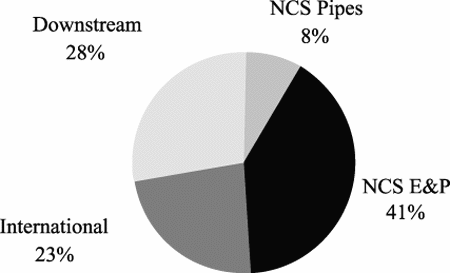
Figur 6-24 Statoil gross asset value
6.3.5.1 NCS upstream
Exploration and production on the NCS is at the heart of Statoil's business. Statoil participates in 149 of the 172 exploration licences on the NCS and is the operator of 18 producing fields and 14 fields under development, including the largest current development on the NCS, the Åsgard field.
After the SDFI, Statoil is the largest producer and reserve owner. Its NCS equity production in 1999 was 196 mmboe and its proven NCS reserves at the end of 1999 were 3,142 mmboe. In 1999, over 75% of Statoil's total production came from seven fields: Statfjord, Oseberg, Sleipner, Gullfaks, Troll East, Troll Oil, and Heidrun.
Statoil has concentrated its NCS operations in three core key areas: the Tampen, Haltenbanken Nordland, and Troll Sleipner areas. Statoil will become the operator for all fields in the Tampen area in 2003 when the operatorship of Snorre, Visund and Tordis is transferred from Norsk Hydro following an agreement relating to their combined offer for Saga. Statoil also operates all major fields in the Haltenbanken area with the exception of Draugen, Njord and Skarv. In October 2000, Statoil sold interests in five assets and licences as part of its NCS restructuring programme.
NCS activities will account for an estimated 90% of Statoil's operating profit in 2000. This is expected to decrease to around 70% by 2005 as Statoil's existing portfolio of international upstream assets commences production.
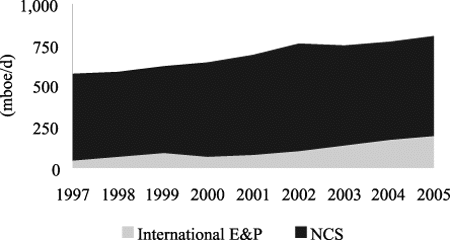
Figur 6-25 Statoil production profile
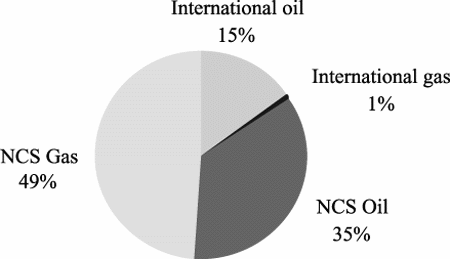
Figur 6-26 Statoil 1999 proven reserves
Kilde: (Source: Statoil)
6.3.5.2 International upstream
International operations comprise 16% of proven reserves, 14% of 1999 production and 23% of asset value. The international share of Statoil's total production is forecast to rise to 25% by 2005. In a paper entitled «Risk of Statoil's business outside the NCS» published by UBS Warburg in March 2000, we concluded that whilst certain elements of risk connected with non-NCS investments may be greater than the risks of NCS investment, there is no evidence at this stage to suggest that the returns available from such investments will be less than commensurate with the overall risks involved.
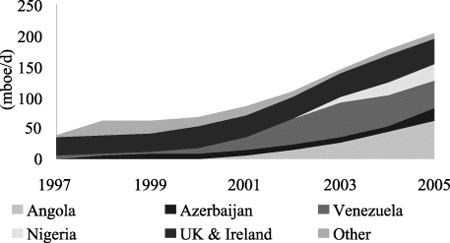
Figur 6-27 Statoil international production profile
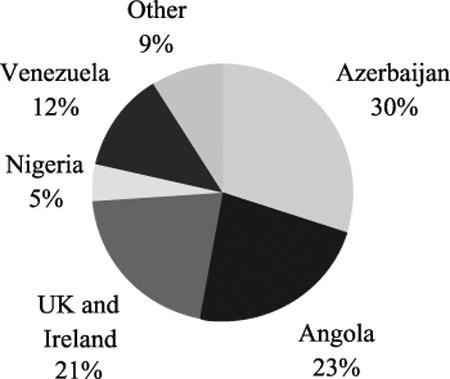
Figur 6-28 Statoil international upstream asset value
Statoil has activities in 11 countries, having exited from a number of countries such as Australia, Brazil, Namibia and Thailand during the past two years. Statoil has stated its international strategy is to concentrate on a smaller number of basins particularly Azerbaijan, Angola and Venezuela. We forecast that two thirds of Statoil's international production in 2005 will be generated from these areas.
6.3.5.3 Refining
Statoil operates two refineries, Mongstad near Bergen in western Norway and Kalundborg in Denmark. The group also has an interest in Shell's Pernis refinery and Petronas's new Melaka refinery.
Tabell 6.2 Statoil's refinery portfolio
| Refinery | Operator | Ownership (%) | Capacity (barrels per day) | Equity capacity (barrels per day) |
| Mongstad, Norway | Statoil | 79 | 200,000 | 158,000 |
| Kalundborg, Denmark | Statoil | 100 | 65,000 | 65,000 |
| Pernis, Netherlands | Shell | 10 | 374,000 | 37,400 |
| Melaka, Malaysia | Petronas | 15 | 100,000 | 15,000 |
Kilde: (Source: Statoil, Wood Mackenzie, Oil and Gas Journal)
The Mongstad refinery was completed in 1975. Initially a joint venture between Statoil and Norsk Hydro, Statoil purchased Norsk Hydro's stake in 1987. Mongstad has been significantly upgraded a number of times to increase the output of lighter products and, more recently, to increase basic distillation capacity. Over 75% of Mongstad's output is exported, mostly to other European countries including the UK, Germany and France. Products are also sold into the US, and the refinery meets Iceland's total requirements for motor fuels.
Mongstad stands at the main landfall for the Troll oil pipeline and for shipments from Gullfaks and Statfjord. Mongstad is one of the most sophisticated refineries in Europe, ranked tenth out of 99 European refineries. With a catalytic cracking capacity of 54,000 barrels per day (upgraded and expanded in 1998) and a coker, a high proportion of residual fractions are converted into higher value, lighter products.
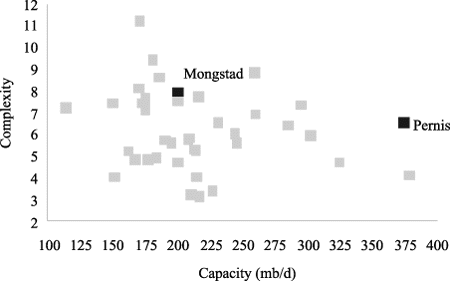
Figur 6-29 Western European refinery capacity and complexity
Kilde: (Source: Oil and Gas Journal, adjusted for Mongstad capacity upgrade)
In November 1999, Statoil signed an agreement with Shell to swap a 21% interest in Mongstad for a 10% interest in Shell's Pernis refinery in Netherlands. The agreement came into force on 1 January 2000 with each party having the right to take their proportionate share of products. This swap enabled Shell to close its Norwegian refinery at Sola, increasing Norwegian capacity utilisation and diversifying Statoil's refining risk profile.
The Kalundborg refinery, located near Copenhagen in Denmark is owned and operated by Statoil. Daily capacity is 65,000 barrels. Output comprises petrol (30%), diesel (40%) and heating oils (20%). Most product is sold in Denmark, although some is sold to Baltic States, Germany and France. Kalundborg is a less complex refinery than Mongstad.
A 15% shareholding in the Malaysian Refining Company gives Statoil a corresponding interest in a new refinery built alongside an existing facility at Melaka in Malaysia. The new refinery began operating in early 1999 and is able to produce a range of high quality products from low cost high sulphur crude oil. Partners in Melaka II are Petronas (45%) and Conoco (40%).
6.3.5.4 Marketing
Statoil began its marketing operations in 1980 following the acquisition of Norsk Brændselolje, an operator of retail outlets in Norway and acquired further marketing interests in 1985 with the purchase of Svenska Esso. In 1986 Statoil acquired Esso Denmark, which included around 500 service stations and the Kalundborg refinery. Since then, Statoil has expanded its marketing network throughout Scandinavia, including the acquisition of BP's Swedish retail outlets in 1991, bringing its total to more than 1,500 stations. It has invested in marketing operations in Baltic rim countries (Estonia, Poland etc.) and the Republic of Ireland.
Tabell 6.3 Statoil's Scandinavian marketing presence
| Norway | Sweden | Denmark | |
| Total retail sites | 2,300 | 3,600 | 2,600 |
| Statoil branded sites | 560 | 634 | 400 |
| Retail fuel market share (%) | 28 | 25 | 18 |
| Statoil no. forecourt shops | 520 | 495 | 338 |
| Statoil share of non fuel sales (%) | 25 | 30 | 21 |
Kilde: (Source: UBS Warburg estimates)
Statoil has a strong marketing position in Scandinavia, particularly Norway with an estimated 28% share of the retail market and 29% of the total product market. Marketing margins tend to be more stable than refining margins but most of the incremental profit comes from non fuel sales. In order to capitalise on this trend, in May 1999, Statoil and Sweden's ICA group created a new company, Statoil Detaljhandel Skandinavia each with a 50% holding. The aim of the joint venture is to make the best use of both the Statoil and ICA brands with the retail section at about 500 of Statoil's largest service stations labelled ICA Express. The other stations retain traditional retail sections with the emphasis on fast food and kiosk products under the Statoil name. In June 1999, Statoil had planned a joint venture with Fortum to cover the Baltic Countries but in January 2000 it was announced that talks had ceased.
Tabell 6.4 Statoil retail and product market share
| Country | Retail market share (%) | Total market share (%) |
| Norway | 28.3 | 28.6 |
| Sweden | 25.4 | 16.8 |
| Denmark | 18.9 | 19.6 |
| Ireland | 19.0 | 15.7 |
Kilde: (Source:Wood MacKenzie)
6.3.5.5 European Gas
The principal components of Statoil's downstream gas business are:
100% holding in Alliance Gas, a UK gas marketing and trading company, which Statoil acquired control of in 1996 from BP and Norsk Hydro. Alliance Gas is the fifth largest commercial gas supplier in the UK, delivering approximately 1.2 bcm annually to more than 2,000 customers.
18.6% holding in NETRA, a pipeline linking Dornum, the landing point of Europipe II in Germany to Etzeland then to Salzwedel and the Verbundnetz Gas AG (VNG) system in eastern Germany.
20.1% stake in Etzel, a German storage facility.
5.3% stake in VNG, a gas supplier in eastern Germany; and
14.5% stake in Vattenfall Naturgas, the Swedish gas transmission and distribution company.
The strategic importance of the current downstream investments is relatively small.
Alliance Gas has operated in a very competitive market in which the number of suppliers has declined from over 40 to less than 20 in a few years. The stability in the market, as shown by progressively lower levels of customer switching and small price changes, has translated into better profitability for Alliance Gas. Although it sources most of its gas needs from the UK, over time it may become an important outlet for Norwegian gas.
Netra and Etzel are part of a transmission network that should, over time, earn a regulated rate of return but are of little strategic importance.
VNG sourced about 25% of its gas in 1999 from Norway and Statoil, as a shareholder, should be a preferred supplier.
Statoil's minority investment in Vattenfall Naturgas is a useful strategic investment. A number of alternative supply routes to Sweden are being investigated. Statoil's equity interest allows better representation of Norwegian interests in this debate.
Statoil has stated its intention to expand this business substantially. The benefits to Statoil and the State from such an expansion depends upon the scope, scale and timing of gas market liberalisation in continental Europe. In November 2000, Statoil announced plans to set up a JV with KOC Holding to target the gas market in Turkey. Statoil intends to use this venture to market gas from Shah Deniz.
6.3.5.6 Other businesses
As stated in our June 1999 report, we do not believe that the following businesses are core to Statoil and would support a substantial reduction in Statoil's ownership and the deployment of the company's capital elsewhere.
Borealis
Statoil holds 50% of Borealis with International Petroleum Investment Company, the investment fund of Abu Dhabi and OMV each holding 25%. Borealis is Europe's largest, and the world's fourth largest, polyolefin producer whose principal products are polyethylene and polypropylene. Borealis also produces and sells smaller amounts of ethylene and propylene to third parties. Borealis» main crackers are not integrated with any of Statoil's refineries and only 13% of Borealis» polyolefin output is produced in Norway. Borealis is building a petrochemical complex, through its Borouge joint venture with the Abu Dhabi National Oil Company, in Abu Dhabi. This joint venture will provide for long term volume growth and increase its focus on Asian markets.
Methanol
Statoil owns 82% of a methanol plant at Tjelbergodden that began operations in April 1997. The methanol business has not yet returned an operating profit and with significant over capacity in the market, prices are expected to continue to be depressed in the medium term.
The methanol plant was constructed primarily to utilise gas production from the Heidrun field in the Haltenbanken. However, the completion of infrastructure necessary to transmit Heidrun gas to continental Europe is expected in 2001. Unless methanol prices recover substantially from current levels, further investment in the methanol plant could be uneconomic. Statoil has already announced plans to increase capacity by 2002.
Offshore loading and crude shipping - Navion
Navion is involved in two principal business areas, offshore loading and crude shipping. It was formed in October 1997 as a joint venture between Rasmussen and Statoil, with Statoil owning 80%. Statoil announced its intention to divest part of its holding in 1998 through an IPO. This was abandoned due to the poor performance of Navion, in part related to significant cost overruns on its new build drill ship, the West Navion.
6.3.6 Equity market background
The performance of publicly listed companies in the oil and gas sector has been driven by specific company performance and, in the recent past, by three more general factors.
Oil price: the price of Brent blend crude oil on the spot market touched US$9.55 bbl on 10 December 1998 prior to OPEC production cuts, which commenced in March 1999. These cuts led to a recovery in crude oil prices and indirectly to a recovery in oil and gas company share prices. In the period between March 1999 to October 1999, the share prices of the major integrated oil and gas companies rose, on a weighted basis, by 28%, outperforming the Samp;P500 2and FTSE 100 3 by 24% and 29% respectively. Since October 1999, share prices have become de-linked from oil prices, implying that equity investors do not believe that current oil prices are sustainable.
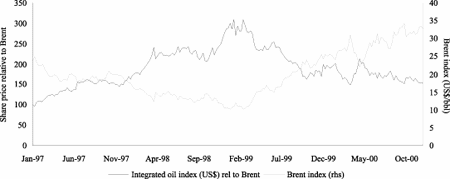
Figur 6-30 Integrated oil sector versus oil price
Consolidation: starting in late 1998, with BP's acquisition of Amoco, the large integrated oil sector has seen significant consolidation. The premiums paid and savings achieved through consolidation have had an impact on equity market valuations.
Tabell 6.5 Recent integrated company mergers
| Acquirer | Target | Date | Enterprise value of target (US$bn) | Annual pre-tax synergies (US$bn)1 | Synergies as % of target EV |
| BP | Amoco | Aug-1998 | 44.7 | 2.0 | 4.5 |
| Exxon | Mobil | Dec-1998 | 65.4 | 2.8 | 4.3 |
| Total | PetroFina | Dec-1998 | 10.9 | 0.4 | 3.4 |
| Repsol | YPF | Mar-1999 | 14.4 | 0.4 | 2.4 |
| BP Amoco | Arco | Apr-1999 | 26.9 | 1.0 | 3.7 |
| TotalFina | Elf | Jul-1999 | 44.8 | 1.1 | 2.5 |
| Chevron | Texaco | Oct-2000 | 38.3 | 1.2 | 3.1 |
1Provided on announcement. In most cases cost savings have increased substantially
Kilde: (Source: Company reports and presentations)
Technology stocks: The emergence of a substantial technology sector over the last two years has reduced investor interest in the oil and gas sector, particularly in Eamp;P companies, causing investment managers to move finite capital into the technology stocks. Related to this is the creation of a number of large technology companies, through mergers such as those of AOL Time Warner and Vodafone Mannesmann, which have secured greater index weighting at the expense of other companies. The correction in the technology stocks in the spring of 2000 has revived interest in «old economy» stocks to some extent.
6.4 Statoil privatisation
6.4.1 Why privatise?
As Statoil operates a significant proportion of the NCS, its future financial and operating performance will determine whether value for the State is being maximised. Any change in the ownership of Statoil that might assist its management in improving operating performance and the performance of the NCS generally must be given careful consideration.
To restructure the SDFI without privatising Statoil would only deliver a small portion of total realisable benefits. To privatise Statoil without restructuring the SDFI would lead to a sub-optimal solution for the management of the SDFI portfolio and potentially fail to maximise the value of Statoil and the NCS. The privatisation of Statoil and restructuring of the SDFI should therefore be completed together. Statoil should be strengthened by acquisition of SDFI assets prior to privatisation. These issues are further discussed in Section 5.2 under the Criteria for retaining and allocating SDFI assets.
6.4.1.1 Advantages of privatisation
A partial privatisation of Statoil will provide:
Through the share price, a continual and objective measure of performance: The share price of liquid stocks traded in the major equity markets capture all relevant information and expectations concerning future performance and therefore value. Without an objective measure of Statoil's performance it will not be possible to determine if Statoil is maximising the value of its assets and therefore the value of the SDFI portfolio or the value of tax for the State.
Exposure to the disciplines imposed by the public equity markets: Absolute share price performance and performance relative to the peer group will encourage management to continually seek ways to improve operating efficiency and focus on the creation of value for all shareholders. The tools currently available to the State that are used to encourage Statoil to improve performance are blunt and are more likely to be used in reaction to events and to protect against risks than to be used proactively and in pursuit of additional value.
Reinforcement of the group's commercial objectives and the potential to speed up decision making: Notwithstanding its status as an independent company and its clear corporate objectives, Statoil is still perceived to be part of the State apparatus for the development of the NCS. A privatisation of Statoil will help create a clear distinction between the State's role as regulator and its role as owner and help clarify Statoil's commercial objectives. This should improve the speed of decision-making and improve its ability to take advantage of new opportunities.
A means to diversify the State's risk exposure to Statoil's activities outside the NCS: Statoil has a large refining and marketing business and is increasing the scope of its international Eamp;P interests. It may also increase the size of its interests in the European gas market. The purpose of international expansion is to reduce reliance on the NCS. The purpose of the expansion in European gas markets is to help commercialise existing gas reserves. UBS Warburg published two papers in March 2000, entitled «Risk of Statoil's business outside the NCS» and «Potential restructuring of Statoil's non-NCS business». In the first paper we concluded that whilst certain elements of risk connected with non-NCS investments may be greater than the risks of NCS investment, there is no evidence at this stage to suggest that the returns available from this investment will be less than commensurate with the overall risks involved. In the second paper we concluded that partially privatising the non-NCS activities was not practicable and could erode overall value. Notwithstanding our view on the balance of risk and return outside the NCS, if the State still wishes to diversify its risk exposure to non-NCS activities it should do this directly through a sale of shares in Statoil.
An uplift in the value of the assets owned by Statoil and the State: In general, investors will be prepared to pay a premium to a DCF-based asset value for an interest in a company with a clear strategy for growth and for generating returns in excess of the cost of capital. Providing Statoil sets out a convincing growth strategy to investors, the State should receive a value in excess of asset value.
Greater flexibility to expand through the use of equity as acquisition currency should the need arise: Acquisitions may be needed to support Statoil's expansion in international Eamp;P or in downstream gas markets. Statoil currently has to fund its expansion through internal cash flow and through access to the debt markets. The use of listed shares as acquisition currency increases the company's flexibility to make acquisitions that could not otherwise be contemplated.
If Statoil responds fully to the stimulus of privatisation, there should be a marked improvement in performance and a change in approach to the operation and development of new and existing reserves. Many of the changes in approach should occur in anticipation of privatisation. Such changes should increase the value of the SDFI and the value of the tax receipts to the State.
6.4.1.2 Performance monitoring without privatisation
The market's provision of a continual and objective measure of relative performance is one of the main reasons for privatising Statoil. Can a performance measurement system be put in place that will provide a basis upon which to judge Statoil's performance without the use of the financial markets?
Performance must be measured objectively, benchmarked against a relevant peer group and measured to exclude the impact of external, uncontrollable factors. Given the potential for conflict between Statoil and the SDFI, any performance measure also needs to include both the assets held through Statoil and directly in the SDFI on a unified basis. Otherwise out performance of Statoil could, at the margin, result in or be a consequence of under performance in the SDFI portfolio.
There are perhaps four groups of performance measures:
Value enhancement, measured through an annual valuation of the whole of Statoil and the SDFI by an independent third party.
Growth in profits, for instance pre tax profit and or cash flow.
Operational measures, for instance operating cost per boe or Famp;D cost per boe; and
Return measures, for instance return on average capital employed or return on invested capital of the company or particular assets or groups of assets.
All of the measures are subject to significant uncertainties, however well documented, giving rise to a protracted negotiation process and the potential for disagreement on definitive benchmarks, target setting and time frames over which to measure performance.
Performance measurement is also only of use if there is a mechanism to reward Statoil for out performance. Even if a performance measurement system and set of targets can be agreed with Statoil, the issue of rewarding out performance remains. As the management arrangement for the SDFI assets is with Statoil, out performance should give rise to a reward to Statoil as an entity. But this is simply transferring value to a directly State held entity.
We do not believe that such measures provide an adequate substitute for the financial markets in measuring relative performance.
6.4.1.3 Consequences of privatisation
We do not believe that there are material adverse consequences of privatising Statoil. Some of the consequences for the State of privatising Statoil include:
Changes to the management of the SDFI: Under Article 19 of the Constitution, the State must be able to instruct, control and supervise the managers of State property such as the SDFI assets. A partially privatised Statoil cannot continue to manage the SDFI portfolio under the existing Guidance Model. Conflicts of interest may also cause value to leak to minority shareholders. This can be addressed both through the composition of the SDFI assets which might be retained by the State and in the structure of a new SDFI management organisation. This is discussed further in Section 6.5.
The diversion of capital and management time to projects outside the NCS: Following privatisation Statoil may be more inclined to increase its non NCS business, diverting capital and management time; this could translate into a reduction in the speed of NCS development and a reduction in tax value to the State. However, Statoil is likely to speed up its international expansion through swapping NCS assets. As a consequence, other operators will assume development responsibility for NCS assets and overall NCS development should not be materially affected.
Loss of control over Statoil: Statoil is wholly owned by the State. The State could in theory impose decisions upon Statoil and use Statoil as a tool for pursuing public policy on the NCS. With the introduction of third party shareholders in an IPO the potential to use this tool will be lost. We do not believe that this is an impediment to the State. A clearer separation of the role of the State as owner and regulator will, in our view, be in the best interests of the State as a whole. However, following privatisation, the State could in any event continue to exert substantial influence over the company as the major shareholder. By retaining two-thirds or more of the share capital, the State would be able to amend the company's Articles of Association. By retaining over half of the share capital the State will be able to nominate a majority of the members to the Corporate Assembly and, through the Corporate Assembly, determine the composition of the Board of Directors which appoints the Executive Management.
6.4.2 Strategic investor
Statoil could consider strategic alliances in pursuit of its existing strategy. Such alliances could provide access to reserves and markets not otherwise available. An alliance might include swapping NCS assets for international Eamp;P assets and/or downstream gas assets in Europe. Such alliances would be formed on the basis of normal legal contracts and could be cemented through an exchange of share capital.
Certain investors could conceivably seek to take an equity interest in Statoil without an underlying exchange of commercial interests. An existing, perhaps marginal, participant on the NCS could seek to reduce its direct interests on the NCS but still want to retain exposure to the basin. The participant would sell its assets to Statoil in return for Statoil equity. Alternatively, a new entrant seeking some exposure to the NCS but not willing to devote the resources to direct investments in licences might similarly wish to take an equity interest.
The merits of any specific strategic investor will depend on the structure and value of the investment and the combined group's strategy. It is unlikely, however, that the introduction of an equity investor or investors in the capital of Statoil could be a substitute for the benefits of a partial privatisation of Statoil through an IPO. The introduction of strategic investor(s) could only start to provide similar benefits to an IPO if Statoil allows the investor to gain significant influence that could then substitute for the continual benchmark of Statoil's performance available through the equity market. The introduction of an investor prior to an IPO would complicate and delay the flotation process and, in using unlisted equity, make valuations more difficult.
6.4.3 Precedent privatisations
Most major European companies in the oil and gas industry were once state owned. These include BP, Total, Elf, Eni and Repsol. BP and TotalFinaElf are now the third and fourth largest oil and gas groups by market capitalisation respectively. Privatisation has been pursued primarily for three reasons:
Separation of ownership from regulation: Many state owned companies were formed to control natural monopolies, such as electricity transmission, or to protect other national interests, such as oil and gas. Sentiment moved towards privatisation in the 1980s and 1990s with a belief that private shareholders make better principals and owners of commercial entities, allowing the State to focus on its role as regulator.
Improved efficiency: State-owned companies often carry a number of obligations that may not allow value to be maximised. Private companies, the management of which is differently incentivised, are more likely to endeavour to increase efficiency and therefore value for their shareholders; and
Sources of finance: Privatisation has been used as a source of immediate, often significant, funds. This is true of privatisations in both OECD and emerging markets. Privatisation has also been used to widen the ownership of shares.
Set out in table 6.6 is a list of the major privatisations in the oil and gas industry since the late 1970s.
Tabell 6.6 Selected oil and gas privatisations
| Company | Start | Finish | Initial offering (%) | Remaining Gov't stake (%) | Market value at IPO price (US$m) |
| Europe | |||||
| BP | 1977 | 1987 | 17.2 | 0.0 | 5,638 |
| Repsol | 1989 | 1997 | 34.7 | 0.0 | 4,314 |
| Total | 1992 | 1997 | 26.3 | 0.0 | 6,074 |
| Elf | 1991 | 1995 | 38.0 | 0.0 | 18,132 |
| Eni | 1995 | - | 15.8 | 36.3 | 26,337 |
| OMV | 1987 | - | 14.9 | 35.0 | 756 |
| Fortum | 1998 | - | 29.9 | 75.4 | 5,230 |
| Hellenic Petroleum | 1998 | - | 20.0 | 62.0 | 1,373 |
| America | |||||
| Petro Canada | 1991 | - | 15.5 | 18.3 | 2,427 |
| YPF | 1993 | 1999 | 45.3 | 0.0 | 7,722 |
| Petrobras | 19971 | - | 23.5 | 52.9 | - |
| Eastern Europe | |||||
| MOL | 1995 | - | 1.0 | 25.0 | 819 |
| Gazprom | 1996 | - | 1.2 | 38.4 | 2,487 |
| Surguteneftegaz | 1994 | - | 2.7 | 0.0 | 1,551 |
| PKN | 1999 | - | 30.0 | 54.4 | 2,192 |
| Asia | |||||
| PTTEP | 1993 | - | 12.3 | 61.0 | 4,582 |
| PetroChina | 2000 | - | 10.0 | 90.0 | 2,732 |
| Sinopec | 2000 | - | 20.0 | 54.82 | 3,313 |
1Represents offering of preference shares to international investors. Ordinary shares have reportedly been privately held since the 1970s
2Refers to stake held by Sinopec Group Company
6.4.4 Privatisation process
Privatisation means selling shares in Statoil, either new shares issued by Statoil or existing shares owned by the State, to private sector investors. In order for investors to trade the shares, the shares are listed on a stock exchange.
6.4.4.1 Size and location of listing
Factors influencing the percentage of Statoil to be sold in an IPO include:
The State's inclination to reduce its exposure to the oil and gas sector.
The need to create liquidity and attract investor attention.
The type and level of control to be retained by the State.
Investor demand and the preferred balance between national and international investors and between institutional and retail investors; and
Equity market conditions at the time of the IPO.
The State may not want to reduce its holding below 67%. On this basis, we believe that the State should consider the sale of an initial 20% in an IPO followed by a secondary offering, say, after 12 to 18 months of a further 13% following continuing progress by Statoil in improving operating performance and the balance of its business. An alternative would be for Statoil to issue new shares such that the State's ownership is diluted down to the requisite level. The size of IPO and subsequent offering would be consistent with precedent offerings in the oil and gas sector. Statoil should be listed in Oslo and New York.
6.4.4.2 Timing and preparation
A successful IPO requires investors to have a clear understanding of Statoil's asset base, cash flows and the regulatory framework in which Statoil is to operate. The sale of SDFI assets to Statoil and the creation of both a SDFI management company and pipeline operating company described in Section 6 should therefore be completed prior to the IPO.
The possible sale of SDFI assets to Statoil after the IPO would:
Make it difficult for the management to present a clear strategy; and
Raise concerns about changes in Government policy.
The creation of a full management and employee incentivisation scheme linked to share price performance should be considered in conjunction with an IPO.
A privatisation of Statoil could take place in 2001 following the availability of the 2000 audited results and Storting approval.
6.4.4.3 Public policy
A successful privatisation of Statoil requires the State to adopt an arm's length relationship with the group with the goal of creating value for all shareholders and to reinforce a transparent and predictable regulatory regime.
6.5 Basis for restructuring the SDFI
6.5.1 Should the State retain or sell all of the SDFI assets?
Privatisation is a trigger for the restructuring of the State's interests, including the SDFI. If Statoil is not privatised there is no immediate need to change the size and management of the SDFI, although we believe that there may be benefits of doing so. If Statoil is to be privatised, the State must change the basis on which the SDFI is managed.
We conclude that the State should neither retain all, nor sell all of the SDFI assets. There are a number of clear disadvantages of each extreme option and most of the benefits of each can be achieved by a careful balance between retention and sale.
6.5.1.1 Why not retain all the SDFI assets?
If Statoil is to be privatised, we do not believe that the State should retain ownership of all of the SDFI assets. There are two principal reasons for this view:
Part of the motivation for privatising Statoil is to ensure that its assets are managed on a fully commercial basis. The same rationale should apply as far as possible to the SDFI assets. If all the SDFI assets are to be retained and managed on a commercial basis, a new management and organisational structure must be created. There are two broad options for doing this, neither of which are satisfactory.
the State could enter into contracts with existing joint venture partners, probably respective operators, to manage the SDFI interest in the respective licence. This will automatically give rise to potential conflicts of interest with the operator; or
the State could create a new company to manage the SDFI assets as a whole. This would require the State to create a fully functioning oil company with all the competencies needed to manage all aspects of exploration, development and production. Such an organisation, whilst a non-operating entity, would have substantial influence over the development of the NCS. Such an organisation would duplicate overhead costs and create a strong disincentive to international companies.
Part of the motivation for privatising Statoil is to introduce a continual benchmark of its performance, demonstrating whether Statoil is being managed in line with best practice. Notwithstanding more active management by an SDFI management team, as a non, the SDFI organisation and therefore the State would in large part remain dependent upon existing operators (largely Statoil and Norsk Hydro) for value creation. By transferring a proportion of SDFI assets to a privatised entity there will be a greater degree of certainty that the State's interests are being managed to maximise value.
6.5.1.2 Why not sell all the SDFI assets?
At the other extreme, the State could consider selling all the SDFI assets to Statoil or to third parties. Set out in Section 5.2 are certain key State objectives including cash flow security and national resource management which will not be met if all the SDFI assets are sold. Additional issues are summarised below.
Transfer to Statoil
We do not believe that all of the assets should be transferred to Statoil:
A transfer to one company of all the SDFI assets could pose a large risk to the State.
A full merger is not required for Statoil to:
gain scale economies-Statoil probably has a greater operating presence on the NCS than any other company in a mature offshore basin.
pursue a strategy to expand its international Eamp;P or European gas business-Statoil is currently pursuing such a strategy and generates sufficient cash flow to finance a modest expansion.
A full merger could limit the ability to introduce new operators to the NCS.
Increased influence of the NCS by Statoil (including in the pipeline system) may compromise other operators and discourage third party investment.
Total substitution of pre tax cash flows for taxes, dividends and capital growth reduces the State's short term revenues from the NCS.
Sale to third parties through open tender
The State could sell all of the SDFI assets to third parties, perhaps through an open tender. Statoil could be included in this open tender but, as Statoil may wish to fund the asset acquisition through the issue of shares to the State, the terms of reference under which Statoil may bid would need to be agreed with the State in advance.
There are certain additional concerns to those raised in transferring all of the SDFI interests to Statoil which leads us to believe that all of the SDFI assets should not be sold on an open tender basis:
If there is insufficient demand for all of the SDFI assets, certain assets will have to be retained in an unstructured SDFI organisation.
Selling the entire SDFI portfolio through an open tender is a complicated and lengthy process and the potential for delay may erode value; and
In accepting cash the State would crystallise values for the whole of the SDFI portfolio based on today's assumptions of oil prices, reserves, costs and taxes. Selling certain SDFI assets for cash and partly privatising Statoil causes no such concern.
6.5.2 Criteria for retaining and allocating SDFI assets
If the State chooses not to retain all of the SDFI assets and not to sell all of the SDFI assets, it must decide what to retain and what to sell and to whom. The objectives of the retention and allocation policy should be to:
Secure cash flows to the State.
Help improve the overall efficiency of the NCS.
Seek to maximise the value of a Statoil IPO.
Ensure a structure robust to price volatility and competition; and
Support the State's national resource management policy.
6.5.2.1 Secure cash flows to the State
The State receives pre tax cash flows from producing SDFI assets, tax from all participants on the NCS and dividends from Statoil (and Norsk Hydro). As a direct owner of interests on the NCS though the SDFI, the State pays its relevant share of any exploration and development costs.
The allocation of SDFI assets involves the substitution of pre tax cash flow for increased tax receipts and dividends if assets are sold to Statoil. There should be a corresponding reduction in the State's exploration and development expenditure obligation.
The type of assets transferred will therefore have a material bearing on the portfolio of cash flows that the State receives. The reduction in cash flow will be minimised and the risk profile improved by retaining interests in high cash flow mature producing assets and by allocating more development and exploration assets.
6.5.2.2 Improve efficiency of NCS
The State must seek to maintain the overall efficiency of the NCS and therefore seek to use the allocation of SDFI assets to:
Assist in the adoption of best practice.
Protect the operating scale of the major operators; and
Prevent obstruction.
Adoption of best practice
Statoil is currently the largest, most experienced operator on the NCS. For the group as a whole, historical operating costs per boe have been around the average of other major operators and Famp;D costs are only slightly above the peer group average (UBS Warburg Statoil Research Report June 1999). This, however, is in part a function of the size of individual assets and the maturity of the NCS. It is not necessarily evidence that Statoil operates or develops its NCS fields at the lowest possible cost.
Statoil's comment on its own performance demonstrates this. «Statoil also has a potential for improvement as a production operator. While results for production stability, safety and environmental protection are showing positive progress, the group still has some way to go before it can claim to be satisfied with its efficiency on the Norwegian continental shelf and with the development of operating costs in these waters.» (From «Creating value for Statoil and the SDFI» Report to the Minister of Petroleum and Energy by Statoil's board of directors - 13 August 1999)
The value to be derived from better management of NCS assets is not easy to assess and, without a proper review of operators» profit improvement plans, could easily be underestimated. There are four broad sources of efficiencies:
Operating cost savings: including de manning, shared services, improved infrastructure arrangements.
Production increases: including increases, without substantial capital investment, from de ottlenecking, and improved reservoir management.
Capital efficiency: including improved project management, evolution of health and safety guidelines, potential changes in procurement; and
Re investment value: including improved exploration and appraisal programmes and better capital allocation.
Adoption of best practice should be instinctive for all partners operating on the NCS. There may, however, be a lesser incentive for the major international companies to devote the required management time to interests on the NCS in which they are not an operator, have low percentage interests and suffer a high tax rate. Without a significant increase in the size of international company involvement on the NCS, available through the allocation of SDFI assets, there is a risk that inward investment will not increase and may wane.
By increasing the interests of international operators on the NCS, they will have greater incentive for improving operations and there should be a greater impetus for change.
Protecting scale
The potential to maximise value is higher for the largest operators in a basin. Taking into account Statoil's existing role in managing the SDFI interests, including selling crude and negotiating gas sales agreements, Statoil probably has a greater operating presence on the NCS than any other company in a mature offshore basin. Consequently, Statoil should, on this basis alone, have the potential to create a highly efficient cost structure. Given that Statoil's caretaker role may change, it is important to replace, at least partially, management responsibility with real equity ownership.
Prevent obstruction
Statoil has interests in all of the thirteen gas pipelines and operates eight of them. Statoil also has varying equity interests in the receiving terminals for its continental European gas sales volumes. The restructuring should endeavour to balance the ownership of pipelines and equity gas so that incentives are properly aligned. While additional regulation can no doubt be used to prevent any abuse, there is a strong case for separating operatorship from ownership.
6.5.2.3 Maximise the value of Statoil IPO
The primary influence on the rating of Statoil in an IPO will be investors» belief in management and in its ability to reinvest cash flows to deliver continued growth at attractive rates of return. The asset composition of Statoil at the time of IPO will critically influence group strategy and management's ability to convince investors of the merits of the company.
If Statoil is to outlive the NCS, which is a pre requisite for a successful privatisation, increased scale becomes important. Our experience of international companies shows that there are some benefits of size. Larger Eamp;P portfolios allow companies to:
Take greater interests in higher return projects than would be appropriate for a smaller capitalised company and therefore create the basis to compete more aggressively for new prospects; and
Invest in regions in sufficient size to create real international businesses. This provides the basis for a better technical understanding and, of equal importance, the basis to build long term relationships with host governments and other operators.
There are two areas of strategy which will be of greater interest for investors and may be influenced by the allocation policy:
International upstream growth; and
Expansion into European gas markets.
International upstream
Following any allocation of SDFI assets, the international portfolio will comprise a smaller percentage of the overall asset base than it currently does. Investors are likely to pressure Statoil to diversify further upstream outside the NCS. Both Statoil's and any SDFI assets transferred to it may be used as acquisition currency in swaps with international companies.
A successful large scale swap is likely to be conditional on swap partners gaining operatorships on the NCS and possibly on gaining access to greater NCS gas reserves. This will increase the diversity of operators on the NCS and should be in the best interests of the State. Care will need to be taken that risks in the execution of any transaction are carefully managed.
European gas expansion
Statoil has indicated its desire to strengthen its European gas position. The allocation policy should support Statoil in pursuit of its gas strategy to the extent possible. As downstream participants want security of supply, Statoil's access to downstream European gas investments may depend upon the delivery of large volumes of NCS gas either through equity gas or contracted volumes. Downstream integration will, however, have to be of a significant size in order to have a noticeable impact on cash flow and earnings, but opportunities for value adding transactions may be limited.
6.5.2.4 Ensure a robust structure
Exploration and production and the wider industry are subject to significant pressures. The NCS, which is a relatively mature basin, must be robust to price volatility and competition. This includes strengthening the operators on the NCS and incentivising operators to improve efficiency and adopt best practice. A critical part of ensuring a robust NCS structure is ensuring that Statoil, post allocation, is also robust to price volatility and competition.
Robustness to price volatility and competition is increased by ensuring that all assets have a positive value at low oil prices and by concentrating in fewer basins to generate real economies of scale in each. Maintaining profitability through the cycle should support a more consistent expenditure programme, particularly in exploration, which tends to lead to better long term returns.
Many companies, including Statoil, cite US$10 bbl as a target oil price at which profitability should be maintained. Most NCS operating fields are profitable on a cash basis at these levels. The objective is to find and develop new reserves on the NCS or elsewhere which are economic at these prices. This requires the pursuit of large, often deep water, prospects or substantial redevelopment projects in areas such as the Middle East. To take a meaningful interest, this requires substantial levels of investment and development risk that, in a low oil price environment can only be assumed by the major companies. To acquire a portfolio of such projects, which can drive sustainable long term growth, requires a certain minimum size of operations.
Statoil in its current size should have the capability to withstand low oil prices for a considerable period of time without affecting adversely the investment programme. Longer term returns are likely to be improved with a larger more diversified portfolio.
The State needs to ensure that the restructuring creates a structure that does not unnecessarily increase the risk of volatility in gas prices. Deregulation in the downstream market may result in some of the margin pressure being transferred upstream. Concentration in upstream supply will better ensure that this pressure is minimised.
6.5.2.5 Support national resource management
One of the State's most important objectives is the management of national resources: the optimal and timely development of all resources on the NCS for the benefit of society as a whole. National resource management is based around the oil first policy and a desire to ensure that large gas fields do not crowd out smaller discoveries. As a result, the State enforces certain decisions that a private company, which is more focused on short term gain, may not make. Although private companies would also be interested in maximising reserve recovery, they may be incentivised, in difficult markets, to use certain assets differently.
National resource management is largely taken care of by licensing rounds, the PDO approval process and the GFU. Nevertheless, the retention of interests in certain fields will help support the State's national resource management objectives.
6.5.2.6 Reduce State risk
The value of the State's tax receipts represents approximately 50% of the value of the State's total interests on the NCS and cannot be diversified. This implies that to minimise its risk exposure to the oil and gas sector, the State should sell all of the SDFI assets and 100% of Statoil for cash and place the proceeds in the Petroleum Fund for re investment outside the sector.
The issues with such a course of action are described earlier in this section. Absent such a course of action, the State could reduce its overall risk profile by including:
Selling shares in Statoil to third party investors for cash.
Selling some SDFI assets for cash.
Increasing Statoil's scale providing greater robustness to low oil prices and improving its competitiveness.
Relinquishing exploration acreage and removing any free rider effect on high risk exploration and appraisal developments; and
Reducing the conflict of interest between Statoil and SDFI through the removal of Statoil's management role and changes to pipeline operatorship.
6.6 Possible restructuring of the SDFI
6.6.1 Restructuring guidelines
During 1999, we examined a number of allocation models that could be used as a basis for restructuring the SDFI. These models were deliberately exploratory but were instrumental in raising a number of key guiding principals:
Retention of strategic assets.
Allocation on the basis of operatorship.
Balancing ownership in the pipeline network; and
Allowing for a manageable SDFI caretaker structure.
6.6.1.1 Strategic assets retained
There are three broad types of assets that the State may consider to be of strategic importance and retain:
Assets which secure substantial cash flows to the State.
Assets that support the State's objectives of national resource management; and
Assets that support the development of immature areas of the NCS.
Cash flow generative
Assets that generate substantial cash flow may be attractive to the State as they:
Have a lower risk profile and capital expenditure obligation than other assets.
Will provide greater national budgeting flexibility; and
Will require less active management and, hence, will be better suited for management under a caretaker arrangement.
National resource management
Control of certain assets will allow the development of smaller, new gas discoveries, the pursuit of the oil first policy and contribute to stability in the supply of gas to Europe. This necessarily takes a long-term view on resource management that may not necessarily maximise value in the short term. Although the State may prefer to control the development of the NCS through regulation, there may be certain assets that are better controlled through ownership.
Exploration assets
The State may want to retain ownership of certain assets in immature exploration regions, for example in the Barents Sea, to protect the State against loss of upside potential from the portfolio and encourage the region's development.
However, we believe that the fiscal regime provides protection against the sale of hidden value in such licences and that the retention of exploration licences may:
Reduce the growth prospects of Statoil and the going concern premium achievable on privatisation.
Complicate significantly the caretaker arrangements: in order to manage such a large portfolio on a commercial basis, the SDFI management will have to include a full complement of sub surface technical teams.
Increase the capital expenditure burden on the State, reducing net cash flows.
Maintain possible existing free rider distortions in the exploitation of existing exploration prospects.
Largely maintain the existing risk profile on the SDFI portfolio; and
Reduce the incentivisation of international operators to increase involvement on the NCS.
We would advise the State to consider the sale of exploration licences to Statoil where Statoil is operator. Other exploration licences should be packaged with other SDFI interests the State decides to sell.
6.6.1.2 Operatorship
The transfer of SDFI interests on the basis of operatorship is an important practical issue.
An operator's preferred level of interest in a licence will depend on a number of factors including the size of the prospect and the shape of its asset portfolio in the region. An operator will be better incentivised to maximise value if it has a larger interest and receives a greater share of the benefits from actions taken to improve efficiency. Operators» equity interests on the NCS are lower than in other major basins due to the SDFI. Although it depends on the specific voting rules under the terms of each licence, as a general guideline we believe operators on the NCS could seek to own a minimum of about 30% of a licence. The restructuring of the SDFI can be used to support this objective. Any large scale transfer of assets to nons may provide a destabilising influence as non-operators would have negative control.
Statoil operated SDFI assets comprise approximately 70% of the value of the SDFI assets. Hence, it is particularly important that Statoil is properly incentivised on these fields and shares a greater portion of the rewards. We would advise the State to consider the transfer of interests in licences to Statoil where it is operator.
6.6.1.3 Pipeline network
The State could consider the retention of its own pipeline interests as well as the extraction of those belonging to Statoil to help form a company along the lines of GasLed, which was initially proposed in 1995. Other pipe owners could transfer ownership of the pipes to a newly incorporated holding company, majority owned by the State, or retain minority interests in subsidiaries. The creation of such a company would:
Allow the potential for notional TPA and increase the transparency in the export system for all participants on the NCS.
Remove the potential for infrastructure owners operators to extract monopoly rents; and
Allow the State to separate any privatisation of the upstream assets and pipeline assets in terms of timing, risk profile and cash flow.
The extraction of all the pipeline interests from Statoil would, however, have a significant impact on Statoil's cash flows and reduce the capacity to invest on the NCS and internationally. The State may, therefore, prefer to combine a closer alignment of Statoil's pipeline and equity gas interests with the separation of pipeline operatorship. This should help improve the NCS gas transportation system, lowering costs and making NCS gas more competitive. The separation of the pipeline operations is discussed later in this section.
6.6.1.4 Caretaker model
The retention policy is influenced by caretaker arrangements. A radical simplification of the SDFI is also the only practical way of ensuring that the retained SDFI assets can be managed without:
Creating a new State oil company with full technical and commercial functions; or
Recourse to existing operators, which will automatically give rise to conflicts of interest of similar or greater magnitude than those the State presently faces under the Guidance Model with Statoil.
We would encourage the State to simplify the structure of the retained SDFI to ensure the optimal functioning of any caretaker arrangements. A possible structure for the caretaker model is described later in this section.
6.6.2 Retention policy
We have advised that the MPE should retain only the minimum number of SDFI assets required to meet the objectives of national resource management, securing State cash flows and ensuring that the gas pipeline infrastructure is managed for the benefit of all NCS participants. We have also recommended that the State relinquish a sufficient interest to enable the relevant operator to achieve a 30% interest.
6.6.2.1 Fulfilment of objectives
Maintenance of cash flows
Figure 6.31 ranks the SDFI assets by the NAV of the SDFI stake. The NAV is a reflection of the net cash flow that an asset generates, particularly for those assets where the development expenditure has already been spent. By retaining interests in the larger assets, annual cash flow to the State from the NCS is better secured post allocation. Any direct reduction in cash flows to the State as a result of this allocation should be compensated for by an increase in efficiency of operations, through lower costs and improved recovery, and the immediate realisation of proceeds from privatisation and asset sales.
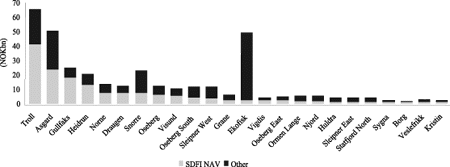
Figur 6-31 Post-tax value of selected oil and gas fields
National resource management
The retention of significant interests in Troll, Oseberg, Åsgard and Ormen Lange helps the State meet its objectives of national resource management. The retention of these assets will provide greater influence over gas supplies in the medium and long term. The retention of Oseberg supports the gas re injection strategy to prolong oil production and Åsgard supports the development of Haltenbanken as a new region on the NCS.
6.6.3 Allocation basis and policy
Other than interests to be retained, State interests in licences where Statoil is the operator should be sold to Statoil. The remainder should be sold to third parties, including Norsk Hydro.
6.6.3.1 Sale to Statoil
The proposed model is supported by our belief that Statoil should be the primary recipient of the assets. This is because:
Statoil is the principal operator on the NCS and selling stakes in assets that it operates to third parties may destabilise joint ventures.
In strengthening Statoil prior to an IPO, Statoil should on balance achieve a higher market rating depending on the market's judgement of management's strategy for re investment of cash flows.
The State will be certain of achieving a market valuation for the SDFI assets transferred.
Larger licence interests should increase Statoil's economic incentive to reduce costs and improve recovery.
Statoil should derive benefits from owning a larger asset base, have greater flexibility to re organise its interests on the NCS to create regional grouping of assets leading to better operating efficiency and be better placed to diversify away from the NCS; and
The sale of SDFI assets to Statoil may assist the State's transition from owner to regulator, confirm Statoil's commercial objectives, speed up decision making, minimise the potential for conflict, create predictability for Statoil and reduce political debate of commercial issues.
6.6.3.2 Sale to others
The balance of SDFI interests should be available for sale for cash to other companies including Norsk Hydro:
An open tender would help maximise proceeds from the sale of interests in non-Statoil operated licences. Asset sales are generally made at a premium to a DCF-based asset value. The premium must be interpreted with care; it is dependent upon the economic assumptions used in calculating the NAV, which might differ substantially from those of a purchaser. Nonetheless, a purchaser would justify any premium through a better understanding of exploration potential, reservoir and or development potential and economies of scale in production and transport.
The transfer of operatorships to purchasers, alongside the sale of SDFI assets, could help maximise value. The introduction of new operators may improve the efficiency of operations and developments on the NCS. There will not be another opportunity to open up the development of the NCS on such a scale. To do this will require the co-operation of Statoil.
The sale of SDFI assets for cash accelerates the State's diversification of value by allowing cash proceeds to be re invested elsewhere.
An efficient sale process conducted in the shortest timeframe with sufficient competitive tension, will ensure an attractive value for the SDFI assets.
SDFI exploration assets should, where practical, be packaged with other assets. Exploration assets not sold might be held by the State for future sale and or interests could be farmed down over time.
6.6.4 Pipeline operating company
The pipeline systems and processing facilities have to be operated in an efficient manner to serve the development of the whole of the NCS. We believe that Statoil should retain most of its equity interests in the pipeline system but relinquish operatorship to a separate POC. The creation of a POC should encourage the development and utilisation of the pipeline system for the benefit of all NCS participants.
It is considered practicable to separate responsibility for operating the pipeline system on the NCS from Statoil. The POC should be seen to be neutral in the marketplace as it will have responsibility for further development of the pipeline system, independently of the interests of any operator. The separation should entail minimal changes to the existing contractual framework between field and pipeline owners and the operator. There must be no disruption to existing operations.
The operating company would, therefore, be independent of the field and pipeline owners on the NCS.
6.6.4.1 Scope of POC
The POC would assume operatorship of (summarised in table 6.1):
All Statoil operated rich gas, dry gas and multiphase field evacuation pipelines that provide or may provide access to the market for field owners who do not have equivalent equity interests in the relevant pipe system. This should include Norpipe, once the operatorship is relinquished by Phillips Petroleum.
All new rich gas, dry gas and multiphase field evacuation pipelines when and if they provide access to the market for field owners who do not have equivalent equity interests in the relevant pipe system. The requirement for POC to assume operatorship of a pipeline at a time when the pipeline provides third party access should be a condition of the development consents.
All Statoil operated terminals and treatment plants. For the avoidance of doubt including those land terminals operating under Norwegian legal jurisdiction.
Commercial aspects of Frigg Transport from 2003; and
Oseberg Gas Transport and the Heimdal facilities at the election of the operator.
Existing field owners should retain rights to all product streams. The point of transfer of operatorship responsibilities from existing operators to POC should not be changed from the existing contractual arrangements.
Tabell 6.7 Scope of operations
| Pipelines | Gas treatment facilities and terminals including | At election of operator |
| Statpipe | Kårstø | Oseberg Gas Transport |
| Frigg Transport (commercial) after 2003 | Tjeldbergodden | Heimdal |
| Europipe I | Emden Dornum | |
| Europipe II | Zeebrugge | |
| Åsgard Transport | Dunkerque | |
| Haltenpipe | St. Fergus | |
| NorFra | ||
| Norne Gas Export | ||
| Heidrun Gas Export | ||
| Norsea Gas (Norpipe)1 | ||
| Zeepipe | ||
| Draugen Gas Export |
1After operatorship is relinquished by Phillips Petroleum
6.6.4.2 Role of POC
Existing operating contracts should be novated, transferring operatorship from Statoil to POC. The POC would therefore assume Statoil's existing obligations, including responsibility for efficient utilisation and overseeing technical operations of the system and infrastructure on the NCS. In addition, POC should:
Create and report upon a benchmark system to assist in monitoring POC performance.
Seek improvements to the system to minimise cost; and
Provide advice on new capacity construction to field owners and the MPE as required.
Under the current gas regulation framework, the MPE would continue to oversee the functioning of the POC to ensure the commitment of adequate management and financial resources and that technical procedures are maintained.
6.6.4.3 Ownership of the POC
The POC should be established by the State as a joint stock company (AS). Its paid up capital would meet the costs of separation from Statoil. The State should hold a direct interest in POC of at least 50% to guarantee neutrality.
6.6.4.4 Operating costs
POC's operating costs would be paid by the pipeline owners in line with existing contracts between pipeline owners and the existing operator.
POC start up costs should be for the account of the pipeline owners. These start up costs include the costs of any new maintenance facilities, the costs of transferring personnel from Statoil and the cost of funding the first month of POC operation prior to receipt of shipper payments made monthly in arrears.
The State might appoint independent consultants to advise on the organisational structure of POC. A consequential review of the cost base of POC may lead to changes in existing budgeted costs charged to pipeline owners.
Operating contracts in respect of new capacity should be negotiated between the POC and the pipeline owners on arm's length commercial terms. The inclusion of incentive arrangements in which cost over runs and savings against budget are shared would be encouraged.
6.6.4.5 Risk
Under existing contracts, losses sustained by pipeline owners deriving from actions of the operator are for the account of the pipeline owners except for losses deriving from the gross negligence of the operator i.e. Statoil. POC should therefore insure against acts of gross negligence. The premium should be charged to pipeline owners as part of POC costs under existing contracts.
6.6.4.6 POC organisation
The POC should create the business support functions normally required of an independent company and as required to support its activities.
POC staff would naturally derive principally from Statoil's existing pipeline unit. POC staff should be permanent employees not on secondment from Statoil or another pipeline owner.
6.6.5 Caretaker model
The caretaker model described below is a direct consequence of the policy on retention and allocation proposed earlier in this section.
The basic premise is that under Article 19 of the Constitution, the State needs the flexibility to make independent decisions concerning the operations and development of its assets. Sub contracting management to another oil company, one that operates on the NCS, would automatically give rise to conflicts of interest.
6.6.5.1 Organisation structure and scope
A new management organisation should be created by the MPE and governed by an SDFI Board. The State, acting on proposals from the MPE, would appoint the SDFI Board. Members might be appointed for a period of three years. Initial appointments might be of differing lengths to ensure continuity at the end of the term of office. The SDFI Board could appoint a small permanent executive team comprising technical professionals from the oil and gas industry and legal counsel.
The retained SDFI assets are not intended to form the core of a new independent business. It is important therefore to constrain the powers of the SDFI Board and Executive. As the SDFI management company does not own any SDFI assets it would have no access to cash for development. The organisation should be reactive and specifically not allowed to conduct its own exploration or development studies unless if directly applied to understanding an operator plan.
6.6.5.2 Information advice
If the State is to be a more active owner manager, does not wish to and cannot legally rely on operators to manage its assets and yet does not want to create its own oil company management, the day to day monitoring of assets has to be out sourced. Competent third parties that offer such advice may be large service companies and technical consultants. Members of such companies could attend the various operating committee meetings as representatives of the SDFI Board Executive, review all relevant technical data and report to the Executive on a regular basis.
6.6.5.3 Contracts
Not every service or advisory company would necessarily have sufficient expertise across the full range of capabilities required to provide advice on all SDFI assets.
A contractor might therefore be engaged for individual assets or areas. The contracts could be for the provision of advisory services to the SDFI Board for a period of time, perhaps three years. The contract must be capable of termination by the SDFI Board, with payment of penalties for the unexpired portion of the contract. Objective performance measures under the contract might be difficult to structure. The contractor would be expected to maintain records, which could be transferred to a replacement at the end of the contract period, or in the event the contract is terminated early. The costs of using a contractor should not in practice be significantly greater than charges by Statoil if it were to fulfil this role on an arm's length basis.
6.6.5.4 Product marketing and sales
We would expect the State to require Statoil to sell SDFI equity oil and gas. In this way, the SDFI does not need to set up its own marketing, sales and trading organisation.
6.7 Results of restructuring
6.7.1 Commercialisation of the NCS
The proposed restructuring is designed to increase cash flows from the NCS and therefore the value of NCS assets on a pre tax basis.
6.7.1.1 Measuring components of incremental value
Set out in figure 7.1 is an analysis of the components of pre tax NCS value. Total remaining reserves underlying the value analysis are 67 billion boe, in line with the NPD's assessment of the remaining reserve base of the NCS.

Figur 6-32 Components of pre tax NCS value
6.7.1.2 Value of reserves, prospects and efficiency
We consider the increased value of the NCS in three broad groups:
Improved recovery of 5 billion boe.
Operating costs and capital expenditure savings on both commercial and technical assets. The analysis assumes that operating and capital expenditure are reduced by 1% per annum, for five years between 2002 and 2006. Whilst these are crude measures of cost reductions, they provide broadly similar results to those established by Statoil in a recent benchmarking exercise. The value of these cost reductions represent 3% of the value of commercial and technical assets (excluding the increase in recovery); and
Re-investment potential from yet-to-find reserves estimated to be some 21 billion boe (unrisked). Assumptions on average discovery size, Famp;D costs, time to first production and average depletion rates lead to the pre-tax value of NOK143 billion or US$0.18 boe post-tax. Given the uncertainties in such an analysis, a range up to US$0.20 boe might be appropriate. These values assume a sharp improvement in average Famp;D costs on the NCS.
6.7.1.3 Value of gas
The effect of the liberalisation of European gas markets on the price and volumes of NCS gas exports is difficult to judge. There are both opportunities and risks. Opportunities include the sale of incremental volumes into a market that could expand at a faster rate than expected. Changes in contracting arrangements including the delivery of gas to a wider number of smaller buyers on more flexible term contracts could also increase margins. It is not possible to quantify the opportunities and risks with any degree of accuracy.
6.7.1.4 Effects of restructuring
There is an element of each of the categories of value described above which will only be generated if the State's interests on the NCS are restructured and Statoil is privatised:
The value of operating and capital expenditure savings and increased recovery is likely to require improvements in the operators» performances and sharing of costs between fields. Statoil operates most of NCS production. Its performance should be galvanised by the process of privatisation. Sharing of costs between fields needs greater commonality of interests between partners across licences. Balancing partners» interests will be most readily accomplished by selling SDFI interests in respective licences to appropriate partners as described in the discussion of the restructuring process.
A significant proportion of the value of prospects, leads and unmapped reserves may not be realised without a change in the way that activities on the NCS are managed. This includes approaches adopted by existing operators, an increase in the interests of international operators and changes in the regulatory process; and
It is unclear to what extent a restructured and or privatised Statoil will be able to protect existing value in gas reserves and sell additional volumes or generate higher margins in a deregulated European market. Nevertheless, providing Statoil with larger volumes of equity gas and allowing it greater flexibility may help achieve these goals.
Overall, it is possible that achievement of between a third and a half of the value from improved recovery, reduction in costs and reinvestment on the NCS requires changes to the structure of ownership on the NCS. The range of pre tax values at stake on this basis might be between NOK120 billion and NOK180 billion, the majority of which accrues directly to the State through the SDFI and tax.
6.7.2 Capital structure of Statoil
The State has the flexibility to create an appropriate capital structure for Statoil following the IPO. The chosen capital structure can be achieved by the sale of SDFI assets to Statoil in consideration for the issue by Statoil to the State of new Statoil shares and or cash. The theoretical optimal capital structure is represented by the ratio of equity and debt at which a company's post-tax cost of capital is minimised. By minimising the post-tax cost of a company's capital, all else being equal, the value of the group will be maximised. A discussion on the theoretical derivation of optimal capital structure is presented in Appendix B.
Statoil's capital structure must also create an appropriate framework for management to develop the business. Higher levels of debt requiring higher interest service and repayment can be used to reduce free cash flow and, at times of high oil price, reinvestment risk. Conversely at times of low oil price, high levels of debt can reduce management's ability to take advantage of opportunities and, at an extreme, cause financial distress.
Set out in figure 7.2 is an illustrative plot of Statoil's post-tax weighted average cost of capital (WACC) at different levels of debt to enterprise value using the UBS Warburg market derived method. In this example, the minimum WACC is achieved at a debt enterprise value ratio of about 35%. At this level, Statoil's estimated credit rating would be BBB, 2001 interest cover (defined as earnings before interest and tax net interest paid) would be approximately 6.3 times and total indebtedness would be approximately NOK95 billion. This is above our estimated 2000 year end level of indebtedness allowing, on a theoretical basis, for Statoil to pay a significant portion of the consideration for SDFI assets in cash. Given the volatility of oil prices, we do not, however, recommend that the State seek to achieve this level of gearing.
If Statoil pays for the SDFI assets through equity only, the resulting level of debt would be about 10% of enterprise value and Statoil would have an estimated credit rating of AA. At this level, Statoil's balance sheet will be much stronger than many of its peers. We do not believe that it is necessary for Statoil to have this type of capital structure.
Given the characteristics of the oil and gas sector, particularly the exposure of Eamp;P companies to oil price volatility, we believe that a debt enterprise value ratio of approximately 20% would be appropriate. At this level, Statoil's estimated credit rating would be broadly A+ and its gearing and interest coverage ratios would not be inconsistent with its peer group.
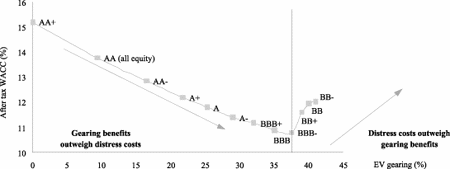
Figur 6-33 Statoil WACC post allocation in the 5 year term for different gearing levels
6.7.2.1 Peer group analysis
Set out in figure 6.34 is a comparison of Statoil's gearing with its peers. This demonstrates that a level of gearing for Statoil within the range described above would not be inconsistent with the peer group. A number of the oil majors have opted to use some of the cash generated in the high oil price environment to buy back shares and increase gearing.
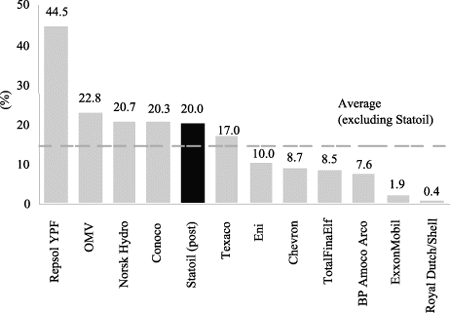
Figur 6-34 Net debt (2000) EV (%)
Kilde: (Source: UBS Warburg research.)
6.7.2.2 Norwegian tax issues
High Norwegian marginal offshore tax rates encourage oil companies operating on the NCS to increase Norwegian gearing to generate tax shelter and lower the cost of capital, although the optimal level of gearing is unaffected by the effective tax rate. This tax shelter has a cost to the State. Given the potential size of Statoil following an acquisition of SDFI assets, the State might wish to limit Statoil's borrowing powers through the company's articles if it does not want to rely wholly on existing thin capitalisation legislation.
Any assessment of the appropriate capital structure of Statoil will have to be reviewed following decisions on the tax basis of the SDFI assets to be sold to Statoil and the application of tax neutrality under Article 10 of the Petroleum Tax Act.
6.8 Appendix A: Abbreviations and definitions
| Abbreviations | |
| bbl | Barrel of oil |
| bcm | Billion cubic metres |
| boe | Barrel of oil equivalent |
| boe d | Barrel of oil equivalent per day |
| btoe | Billion tonnes of oil equivalent |
| DACF | Debt adjusted cash flow |
| Eamp;P | Exploration and Production |
| EBITDA | Earnings before depreciation, amortisation, interest and tax |
| EV | Enterprise value |
| Famp;D | Finding and Development |
| GFU | Gassforhandlingsutvalget |
| IPO | Initial Public Offering |
| LNG | Liquefied Natural Gas |
| mb d | Thousand barrels of oil per day |
| mboe d | Thousand barrels of oil equivalent per day |
| mcm | Thousand cubic metres |
| mmboe d | Million barrels of oil equivalent per day |
| MPE | Norwegian Ministry of Petroleum and Energy |
| NAV | Net asset value |
| NB2000 | Norwegian National Budget for 2000 |
| NCS | Norwegian Continental Shelf |
| NOC | National Oil Company |
| NOK | Norwegian Kroner |
| NPD | Norwegian Petroleum Directorate |
| OPEC | Organisation of Petroleum Exporting Countries |
| PDO | Field development plan |
| POC | Pipeline Operating Company |
| Ramp;M | Refining and Marketing |
| SDFI | State's Direct Financial Interest |
| Statoil | Den norske stats oljeselskap a.s. |
| TPA | Third Party Access |
| UKCS | United Kingdom Continental Shelf |
| US | United States |
| US$ | United States Dollar |
| WACC | Weighted average cost of capital |
| Definitions | |
| Commercial reserves | Reserves that are commercially worthwhile to produce |
| Complexity | A measure of the sophistication of a particular refinery. The more complex a refinery, the greater the value added to each processed barrel of crude oil |
| Enterprise value | The sum of the market equity value and the net debt of a company |
| Equity Value | Generally the market value of a company's equity |
| Gross asset value | Net asset value before the deduction of net debt |
| Net asset value | The discounted cash flow value of an asset or company, less any net debt associated with the asset or company |
| Net debt | The value of cash and liquid investments less interest bearing liabilities (debt) |
| Possible reserves | Estimated quantities of crude oil, natural gas and natural gas liquids which are not probable but have a significant but less than 50% chance of being technically and economically producible |
| Probable reserves | Estimated quantities of crude oil, natural gas and natural gas liquids which are not proven but have better than 50% chance of being technically and economically producible |
| Proven reserves | Estimated quantities of crude oil, natural gas and natural gas liquids which geological and engineering data demonstrate with reasonable certainty to be recoverable in future years under existing economic and operating conditions (i.e. having a better than 90% chance of being produced) |
| Reserves | Estimated quantities of crude oil, natural gas and natural gas liquids which are as yet unproduced |
| Technical reserves | Reserves which are known to be present but which have not yet been judged commercial |
| Weighted average cost of capital | See appendix B |
6.9 Appendix B: Theoretical optimal capital structure
The cost of capital is defined as the weighted average of the cost of debt and equity (WACC). The cost of both debt and equity are related to risk. The weighting is simply the ratio of debt or equity to the total market value of debt and equity (the enterprise value). As risk on debt is less that the risk on equity - interest is paid before dividends and debt-holders are paid out before equity holders in a liquidation - the cost of debt is lower than the cost of the equity. By increasing the level of debt the pre-tax weighted average cost of capital declines. In addition interest payments can be offset against tax (the tax shield) reducing further the post-tax cost of debt to the company. There is, however, a point at which the cost of debt rises due to an increased chance of default - the distress cost.
For every company, there exists a point at which the adverse effects of distress costs outweigh the beneficial effects of swapping equity for debt. This is the theoretical optimal capital structure. Competitive pressures within a sector frequently make it unfeasible to gear up to the financially optimal level - this may make the firm vulnerable to predatory pricing or to adverse external shocks to its revenues or costs.
Calculating the post-tax weighted average cost of capital requires an estimate of the cost of debt and the cost of equity. The cost of debt is straightforward: it is the rate at which banks and or bondholders are prepared to lend money. The cost of the equity is equal to the rate of return required by an equity investor to hold a company's shares given the risk of the shares and has to be judged from the characteristics of the equity markets. There are a number of ways of calculating the cost of equity. The traditional method of calculation, called the Capital Asset Pricing Model (CAPM), was derived for equity portfolio managers. It assumes that an investor is holding a fully diversified portfolio of stocks. The relevant aspect of risk on any individual stock is therefore related only to how the price of that stock moves - or is correlated - with the rest of the portfolio. The CAPM therefore extrapolates from the past and is not concerned with the specific risk of the stock.
In calculating a company's cost of capital, however, we believe that both specific risk and anticipated risk are critical. Both can be largely captured by using a measure of a share's future volatility most readily measured through the option markets. Such a market-derived calculation of the cost of equity can used more readily to compare companies and their cost of capital in a consistent fashion across borders and markets. Under the market derived method, we calculate the cost of equity by adding the cost of a company's corporate bonds (based on current credit spread for the company) to the cost of excess equity returns above the total return of the bond minus any expected dividends.